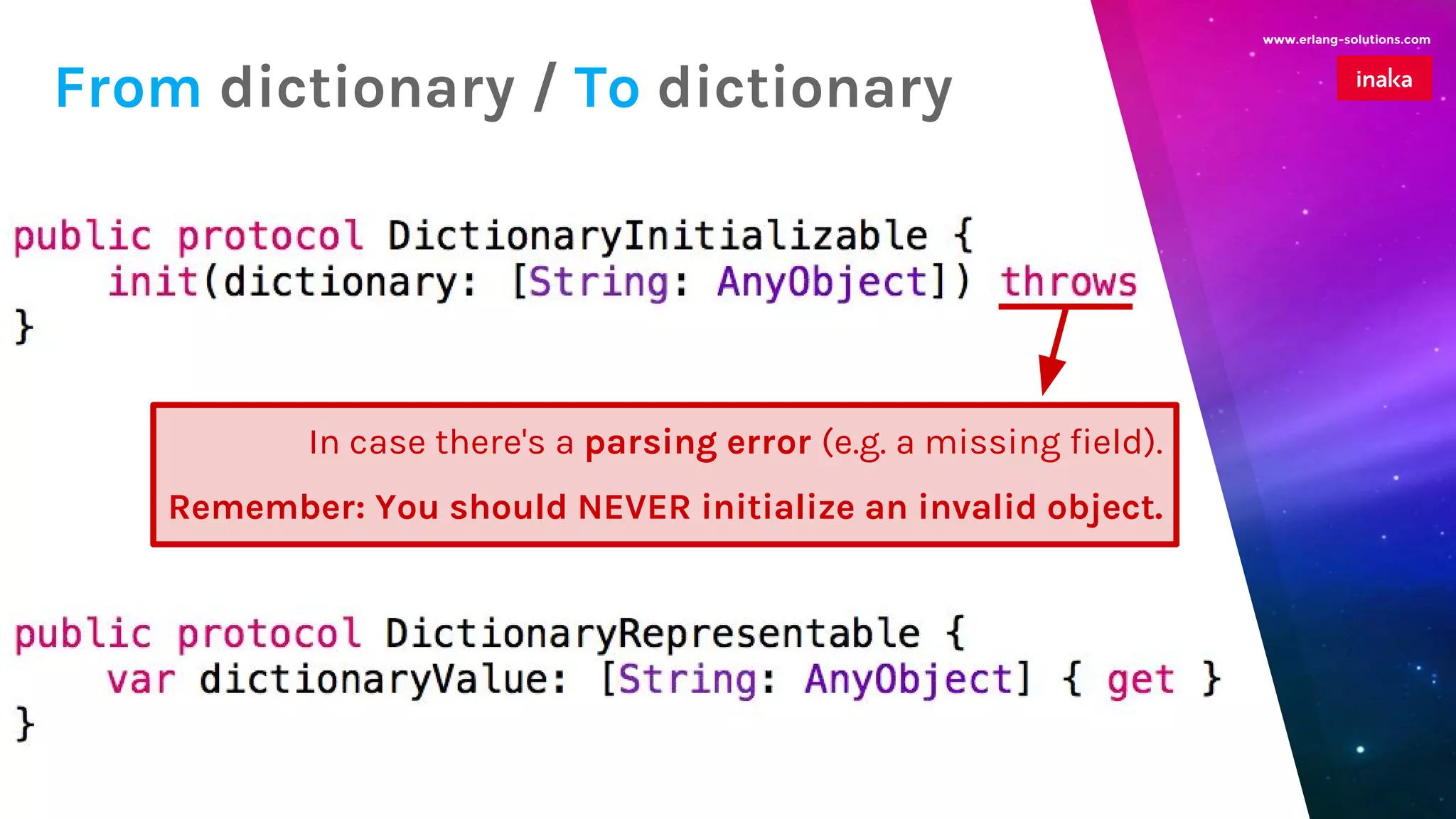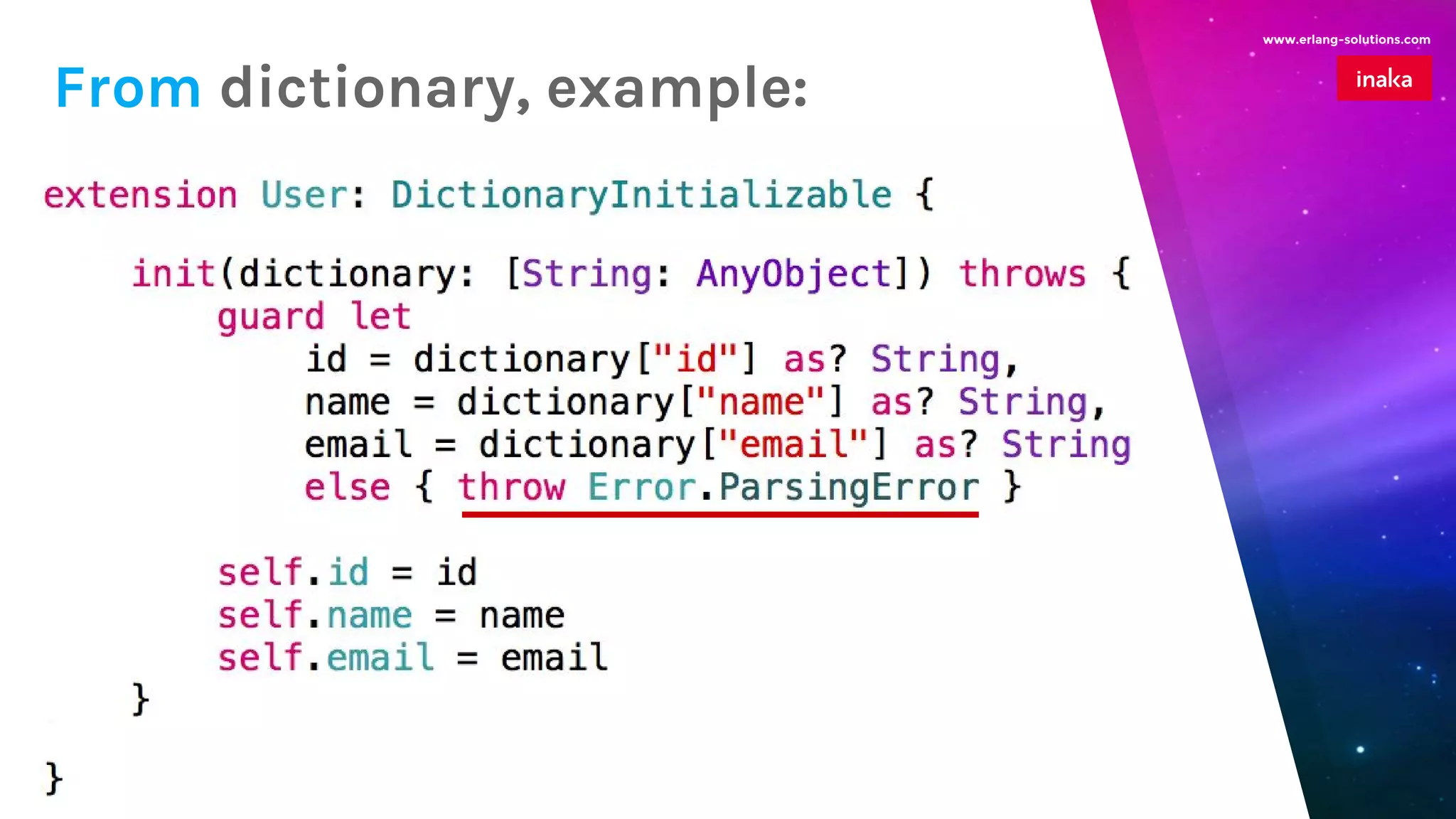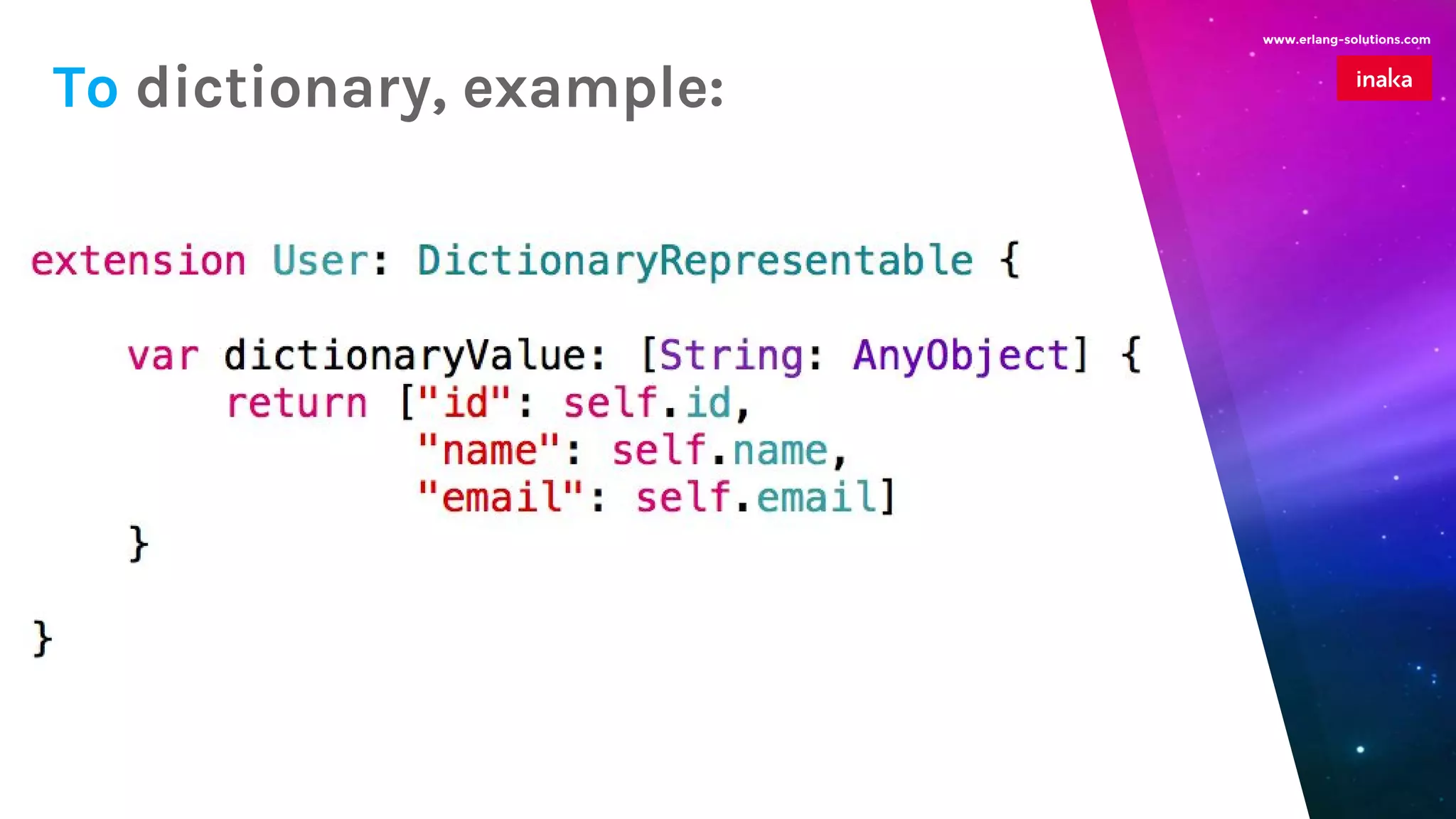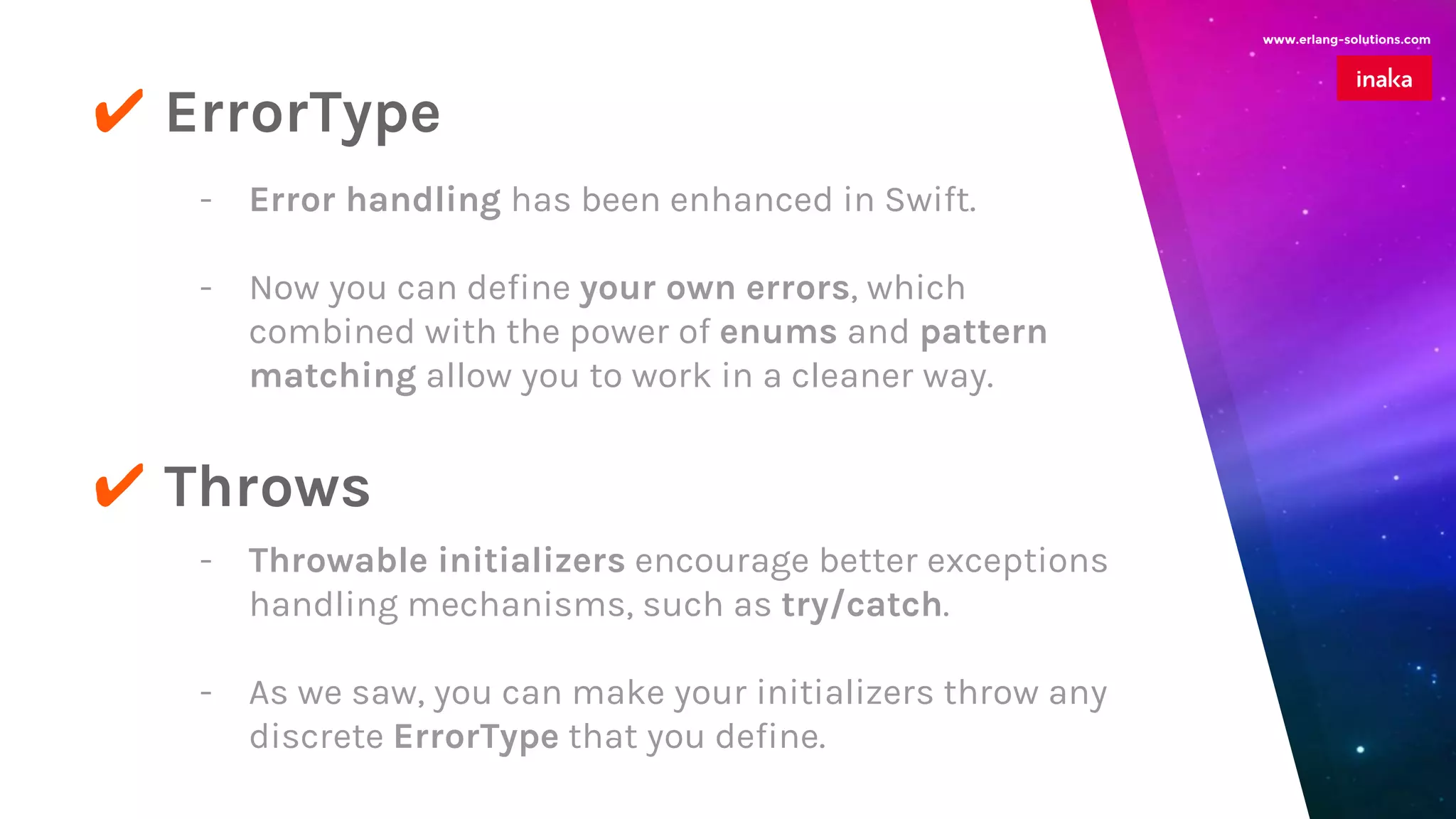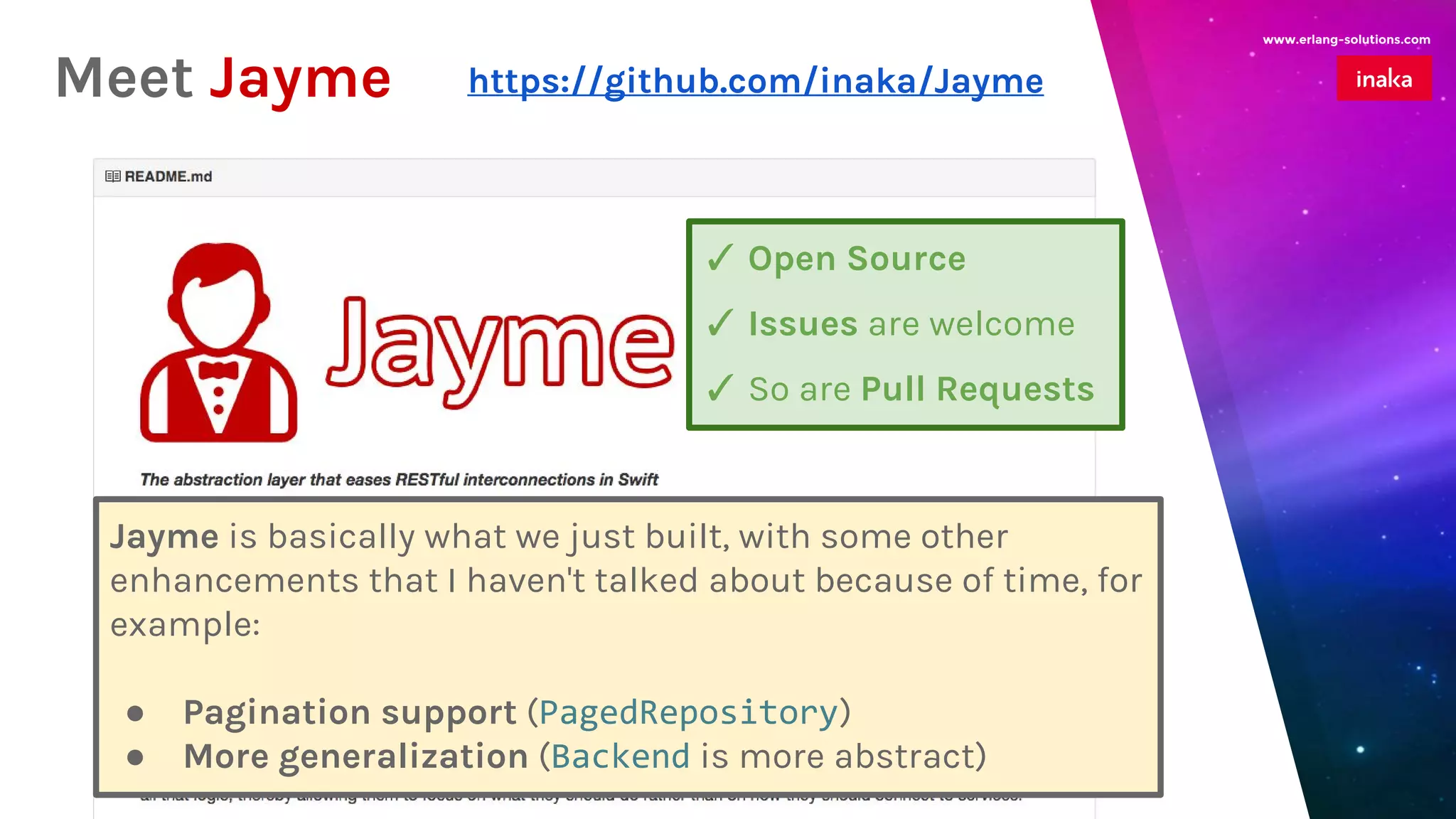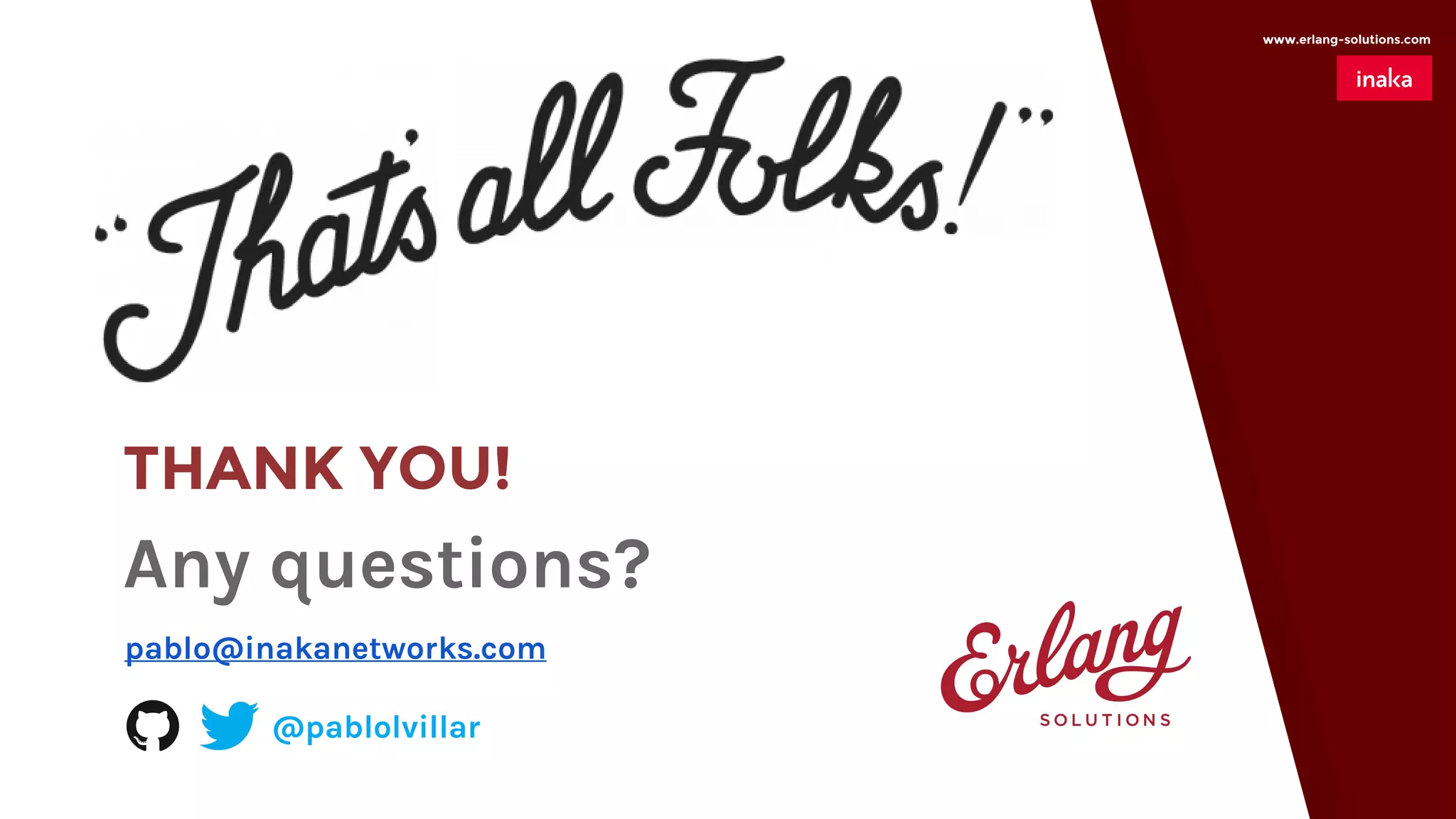The document summarizes Pablo Luciano Villar's presentation on writing a REST interconnection library in Swift. The presentation covered the motivation for such a library, proposed an architectural concept using repositories and backends to abstract network calls, and provided an implementation example in Swift using protocols, generics, enums, and other features. Key aspects included defining a common API for CRUD operations across different entities, handling asynchronous network requests with Futures, and enhancing error handling and data parsing. The full implementation is available as an open source library called Jayme.

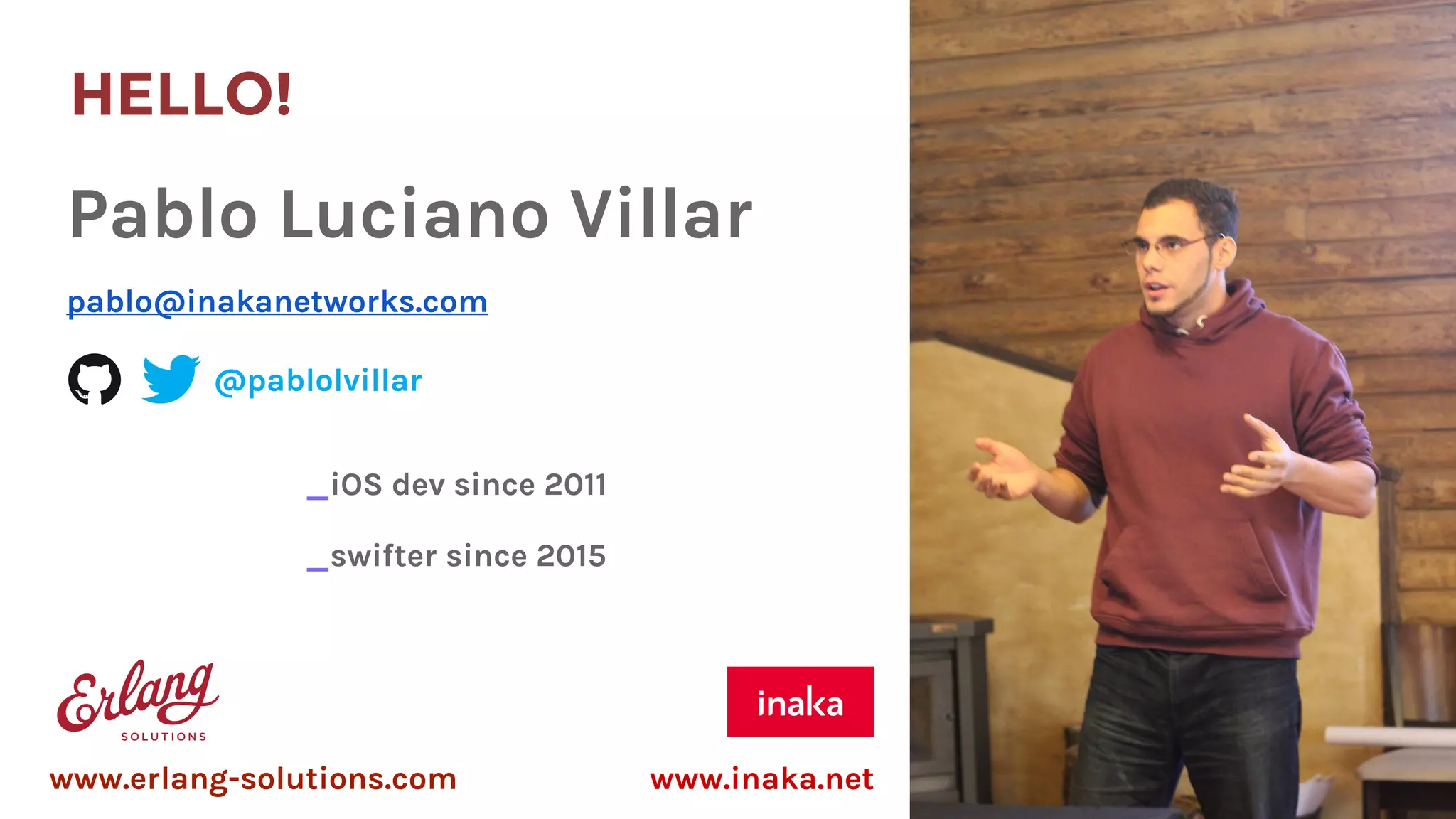
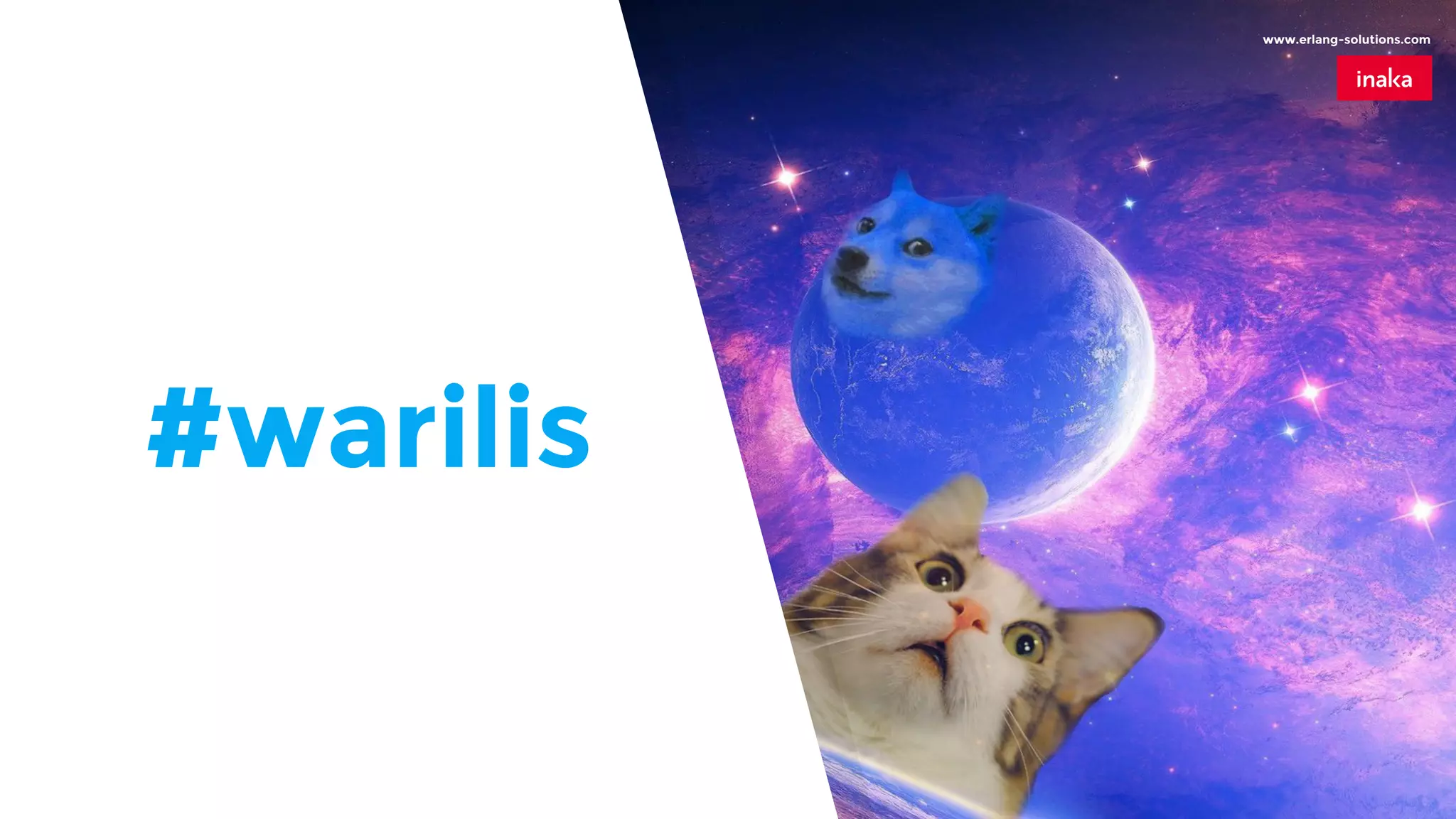




![www.erlang-solutions.com Why would we need a REST interconnection library? Create a user with this info: [...] 200: Success, user created Our App Server Backend](https://image.slidesharecdn.com/warilis-160609134510/75/Writing-a-REST-Interconnection-Library-in-Swift-8-2048.jpg)
![www.erlang-solutions.com Why would we need a REST interconnection library? Update some info for this user: [...] 200: Success, returns user updated Our App Server Backend](https://image.slidesharecdn.com/warilis-160609134510/75/Writing-a-REST-Interconnection-Library-in-Swift-9-2048.jpg)
![www.erlang-solutions.com Delete this user: [...] 200: Success, user deleted Why would we need a REST interconnection library? Our App Server Backend](https://image.slidesharecdn.com/warilis-160609134510/75/Writing-a-REST-Interconnection-Library-in-Swift-10-2048.jpg)

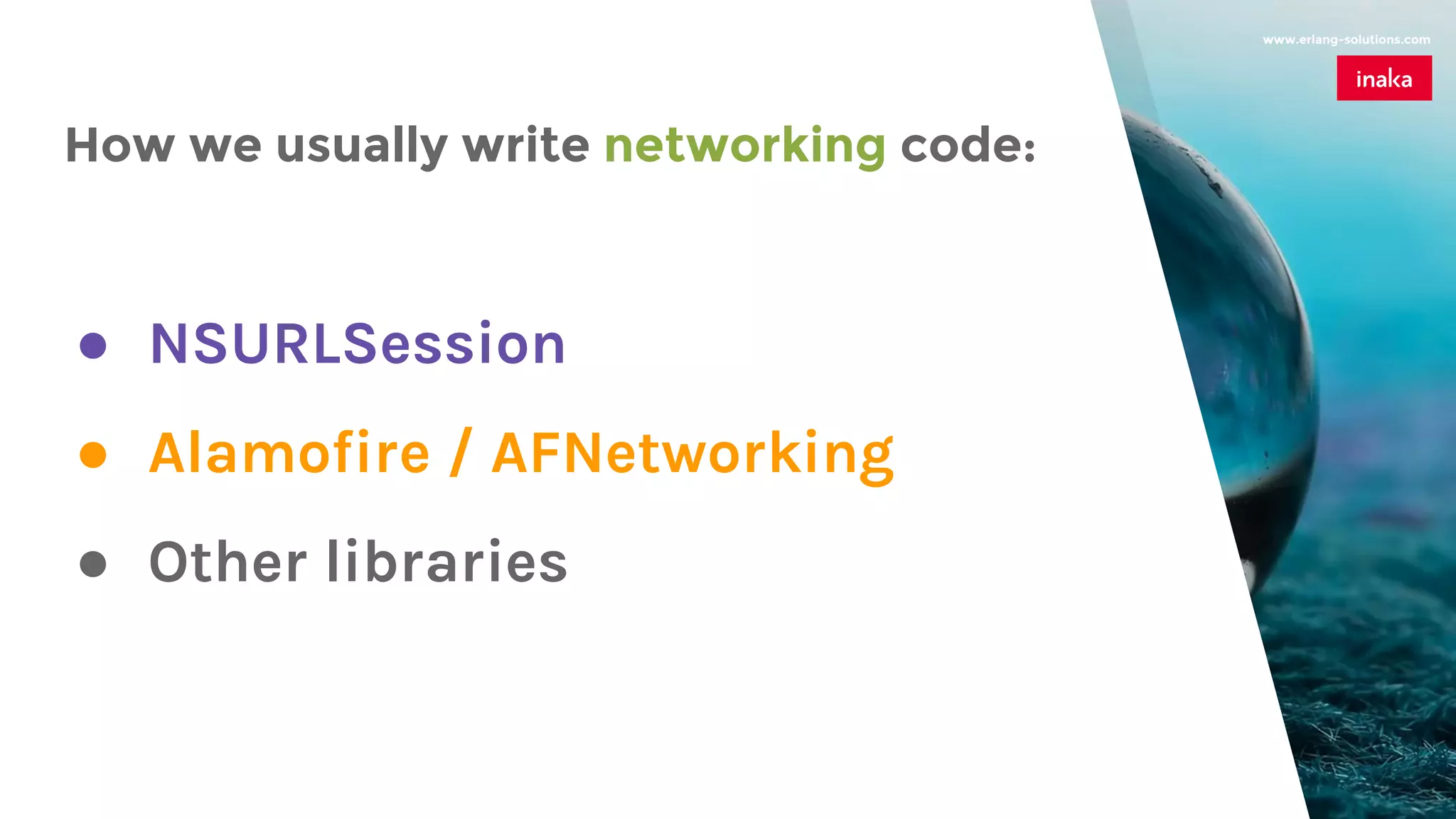
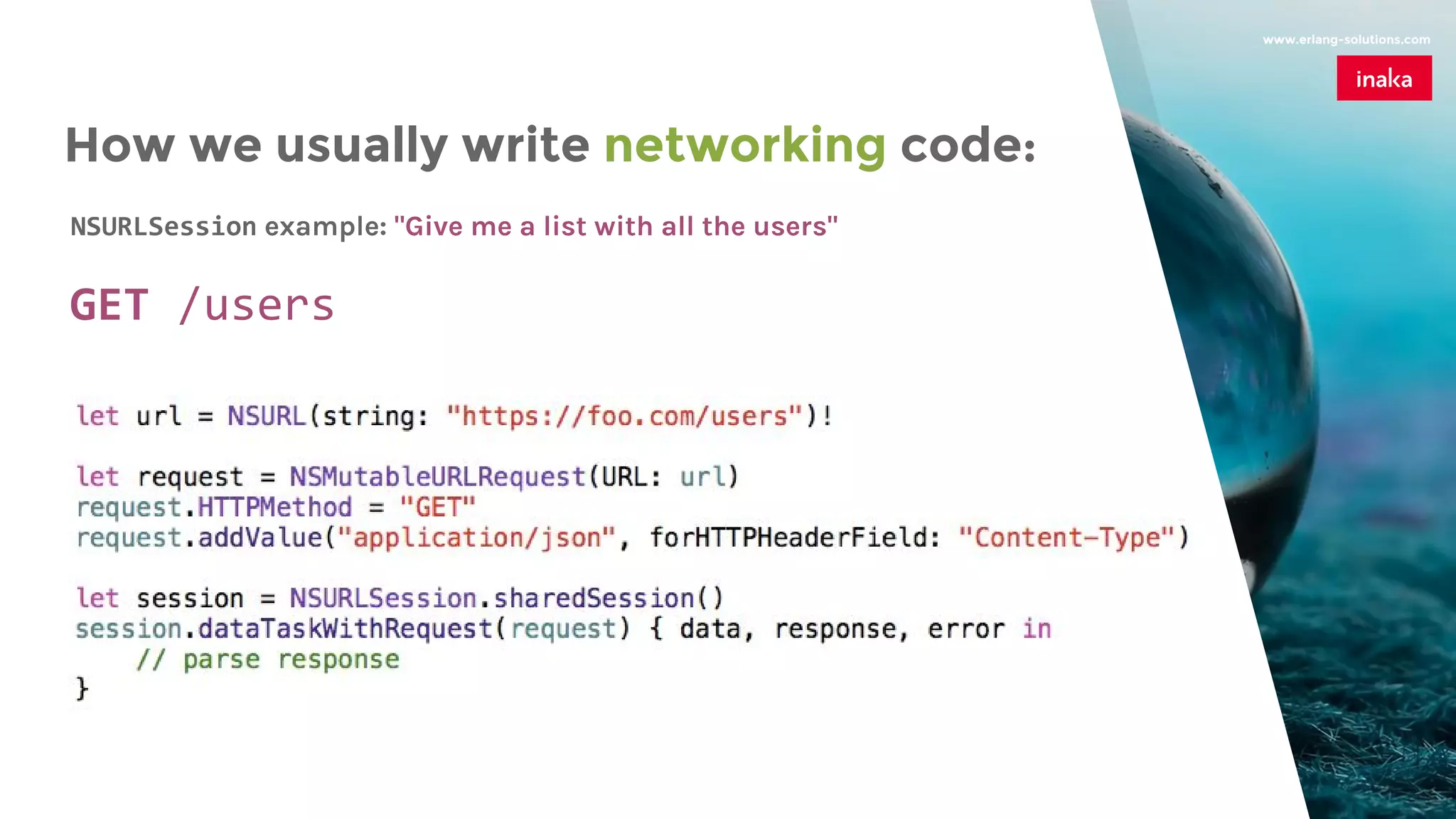

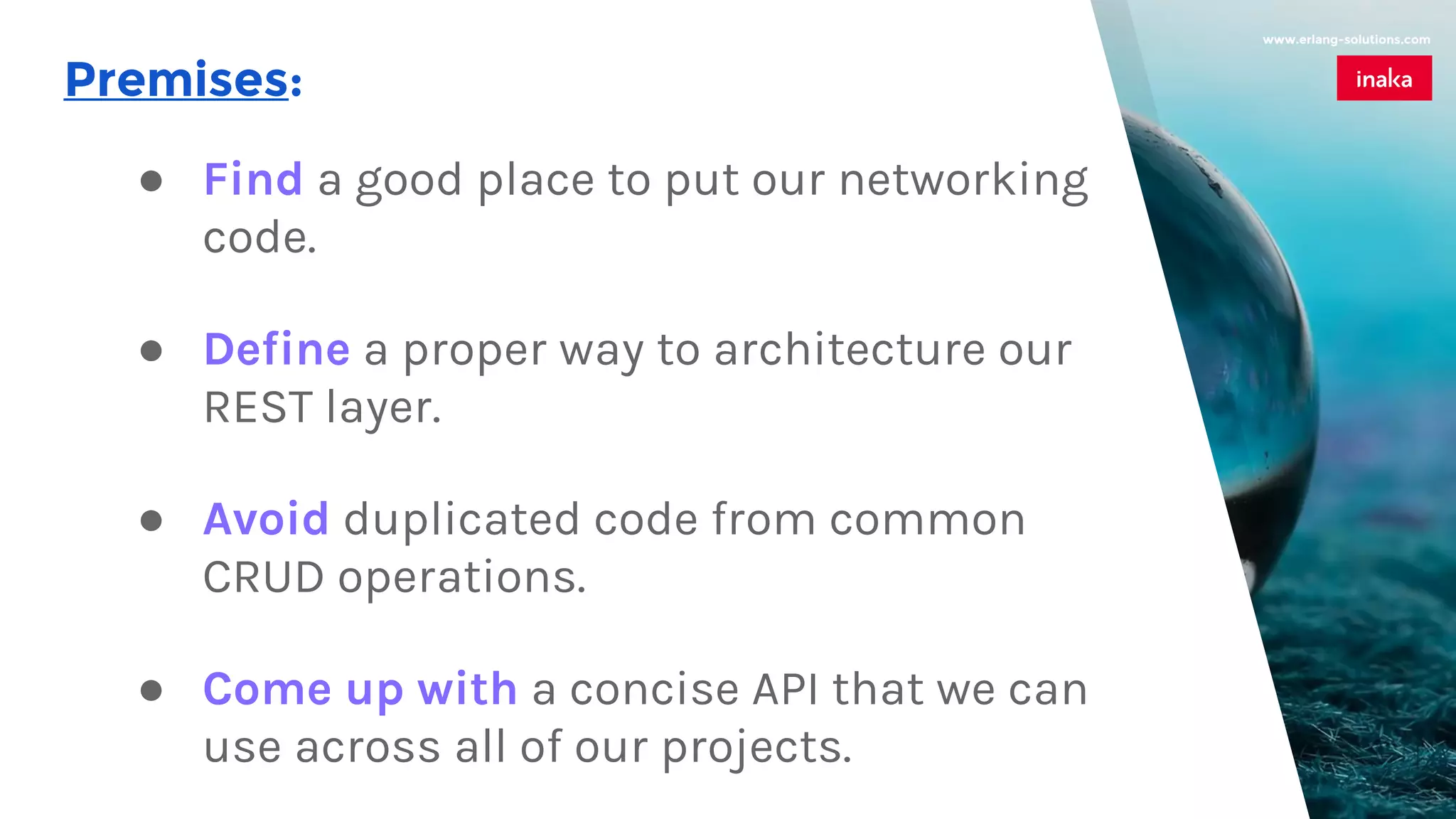


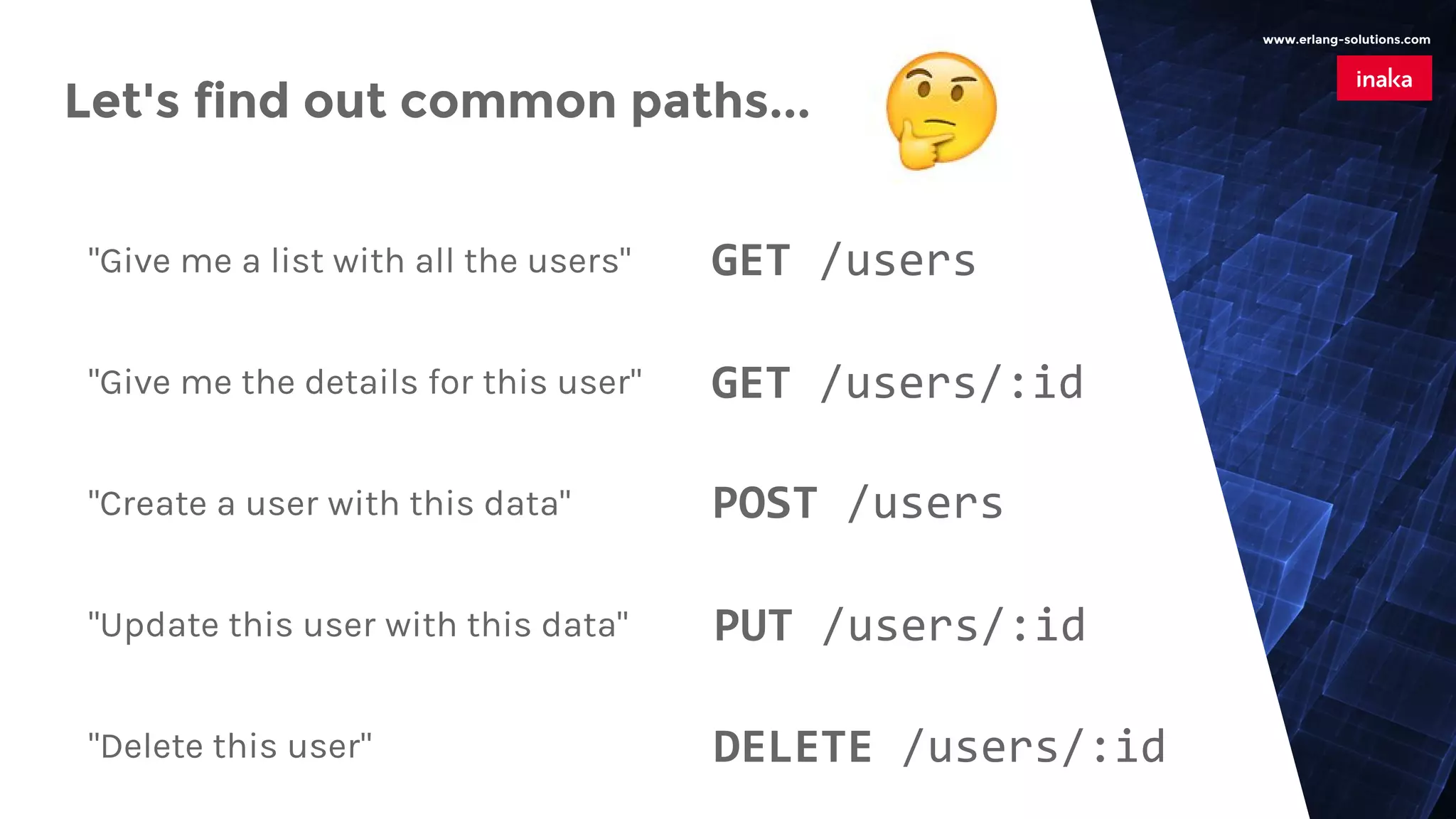
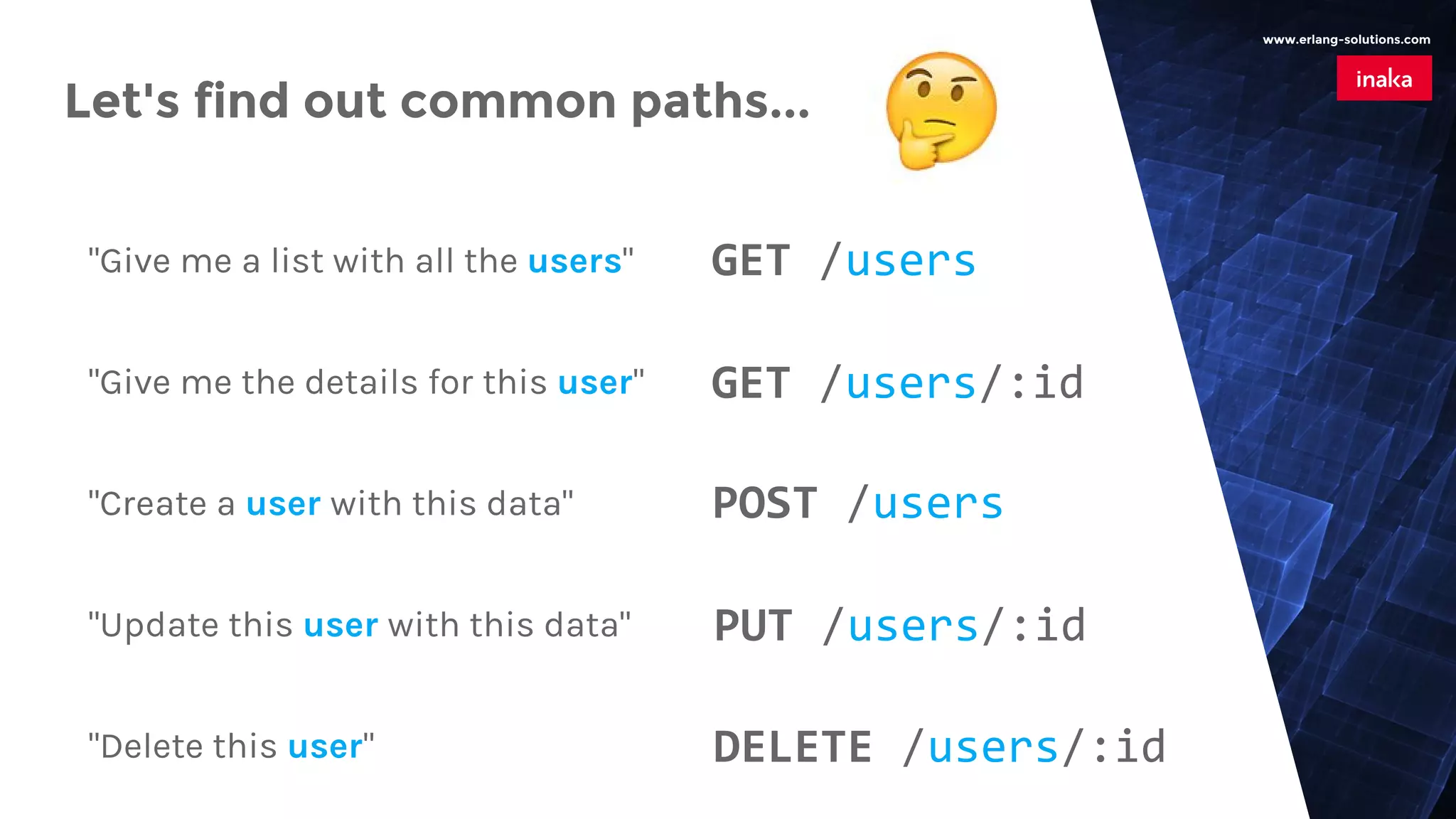
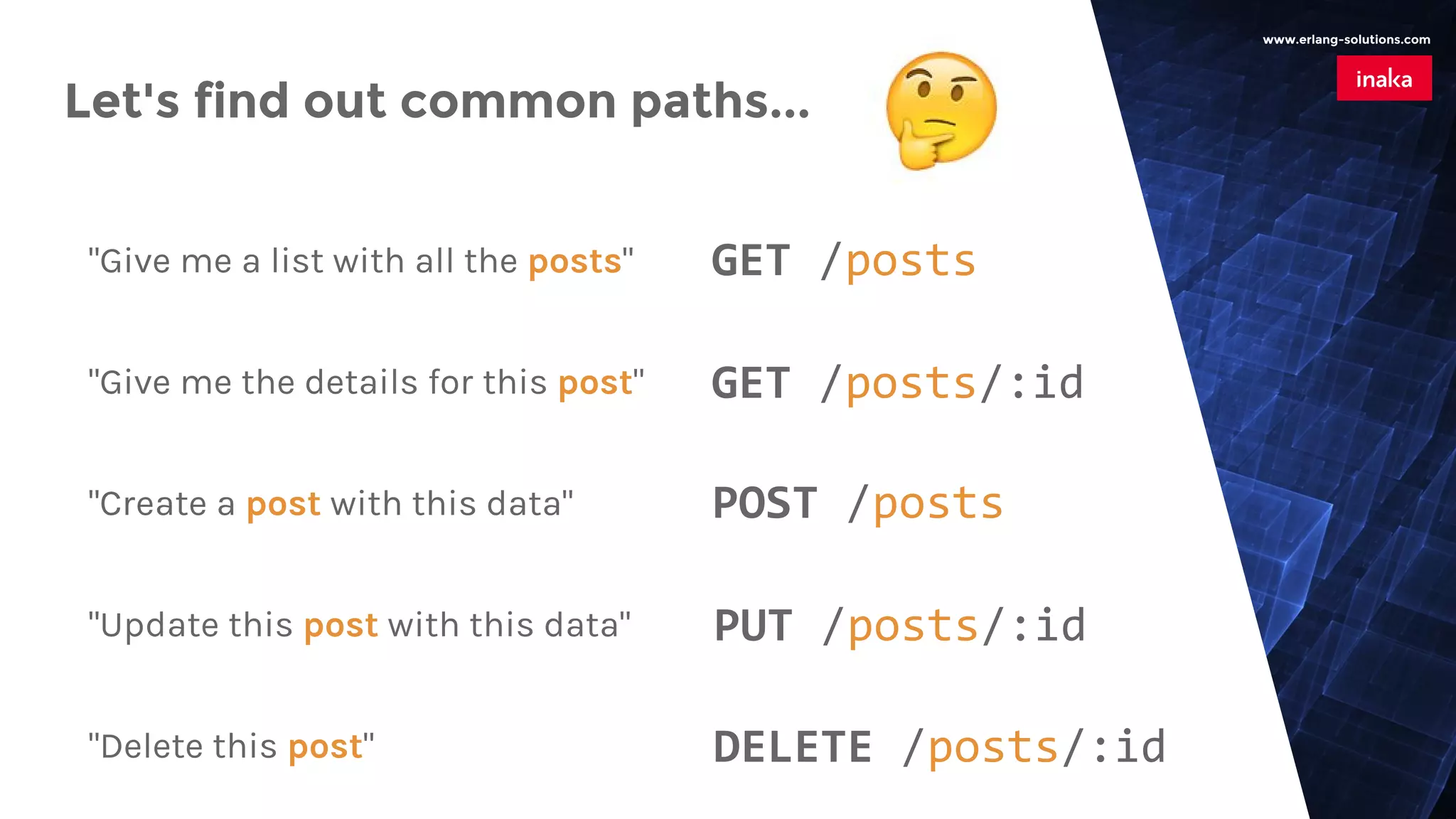
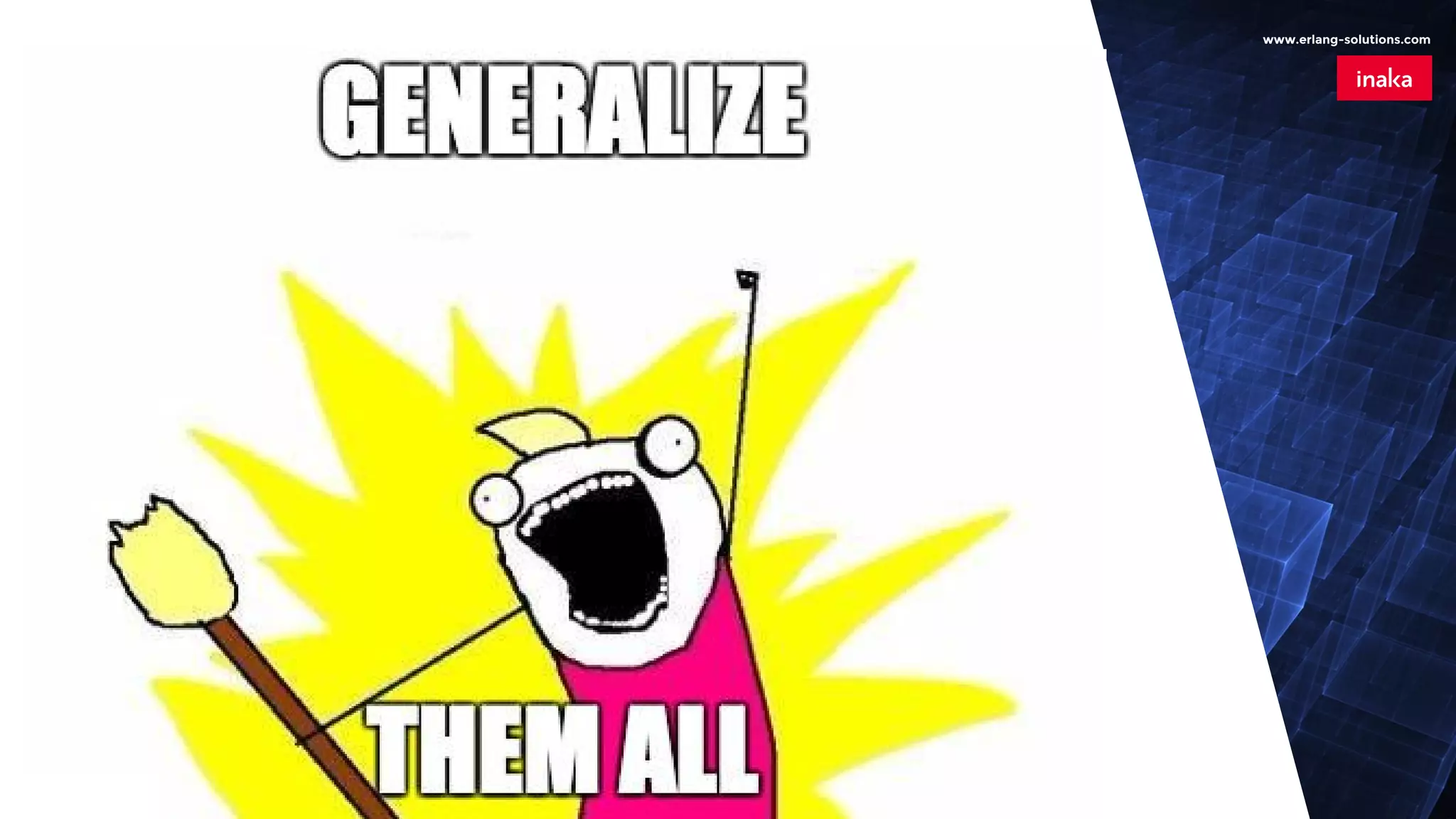

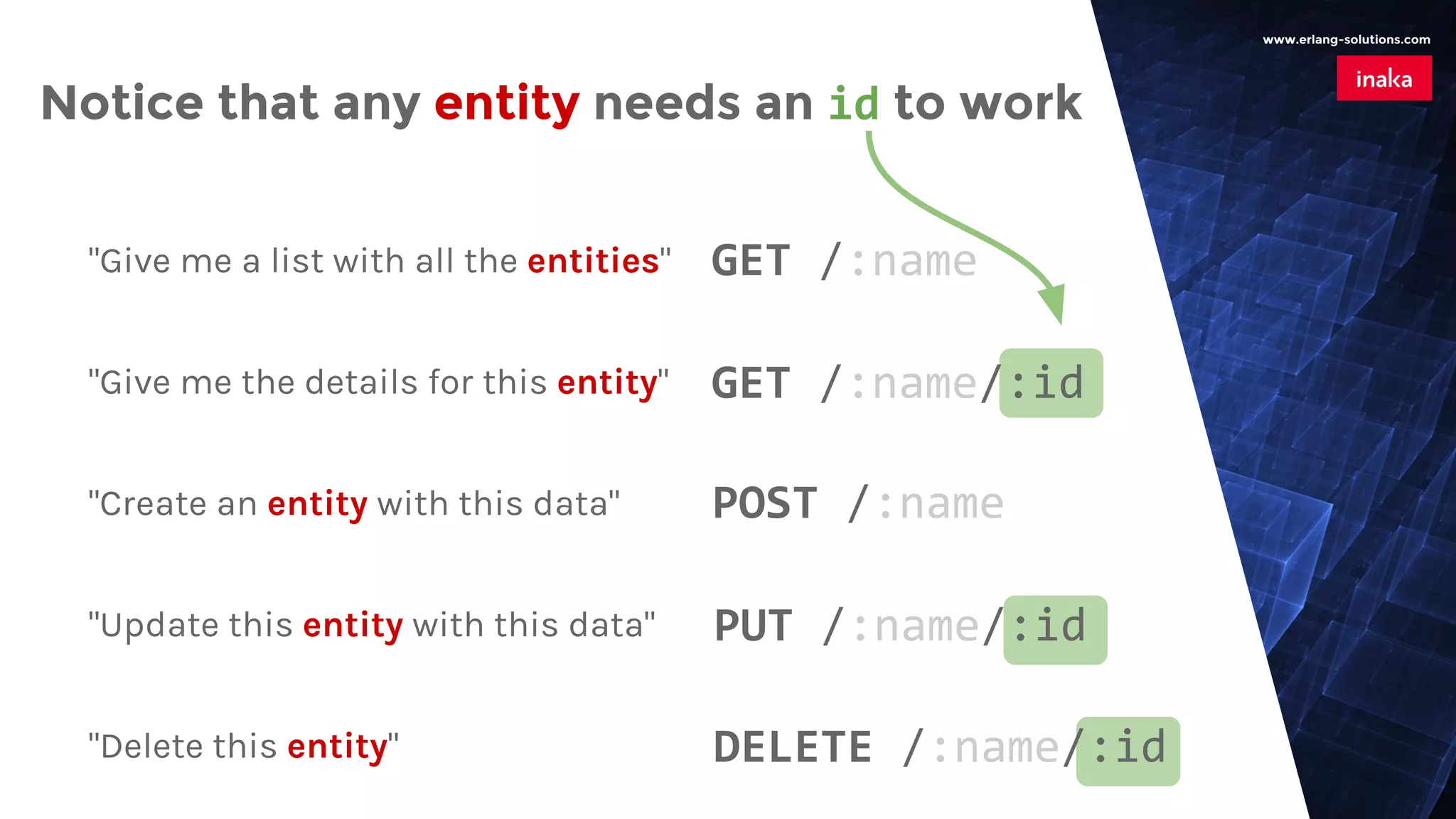
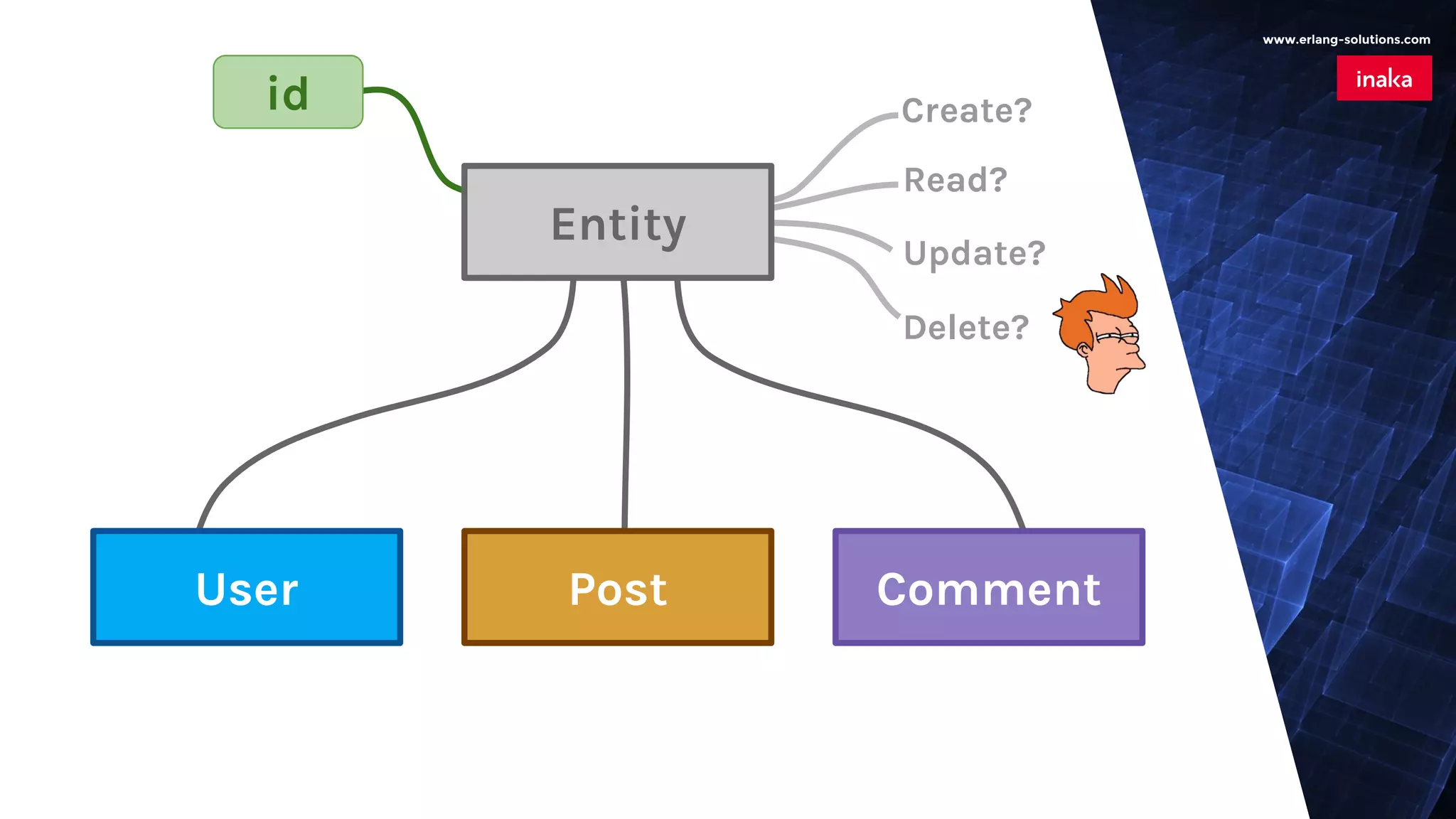
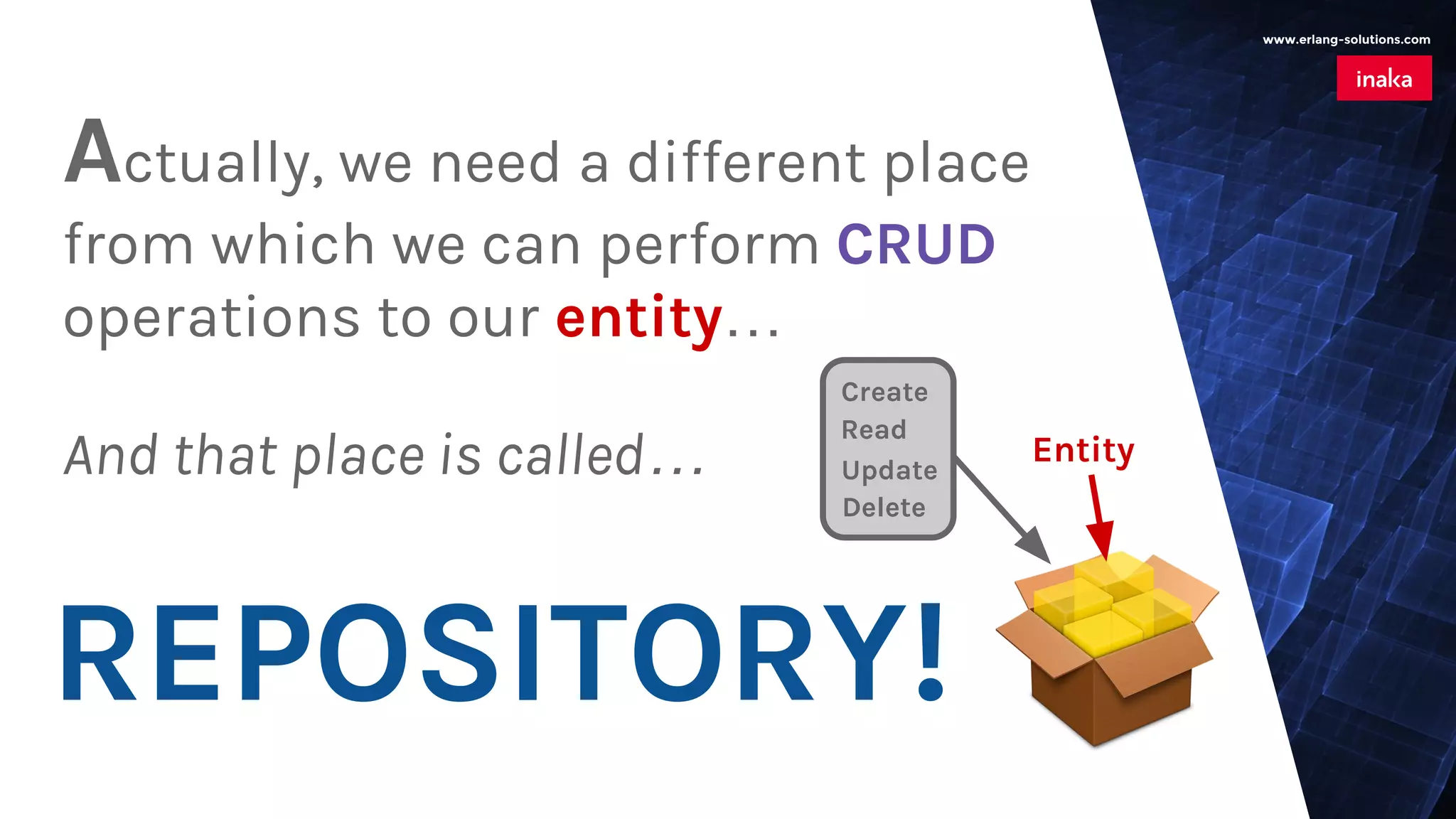
![www.erlang-solutions.com User Repository User findAll() → [User] findByID(id) → User create(User) update(User) delete(User)](https://image.slidesharecdn.com/warilis-160609134510/75/Writing-a-REST-Interconnection-Library-in-Swift-26-2048.jpg)
![www.erlang-solutions.com Elemental CRUD operations* Repository Entity findAll() → [Entity] findByID(id) → Entity create(Entity) update(Entity) delete(Entity)](https://image.slidesharecdn.com/warilis-160609134510/75/Writing-a-REST-Interconnection-Library-in-Swift-27-2048.jpg)
![www.erlang-solutions.com Post Repository Post findAll() → [Post] findByID(id) → Post create(Post) update(Post) delete(Post) Customization findPostsFromUser(User) → [Post]](https://image.slidesharecdn.com/warilis-160609134510/75/Writing-a-REST-Interconnection-Library-in-Swift-28-2048.jpg)


![www.erlang-solutions.com name Our Repository needs a name to work Repository Entity findAll() → [Entity] findByID(id) → Entity create(Entity) update(Entity) delete(Entity) GET /:name/ GET /:name/:id POST /:name PUT /:name/:id DELETE /:name/:id](https://image.slidesharecdn.com/warilis-160609134510/75/Writing-a-REST-Interconnection-Library-in-Swift-31-2048.jpg)
![www.erlang-solutions.com User Repository findAll() → [User] findByID(id) → User create(User) update(User) delete(Entity) GET /users/ GET /users/:id POST /users PUT /users/:id DELETE /users/:id This name represents the group of entities that the repository works with "users" User](https://image.slidesharecdn.com/warilis-160609134510/75/Writing-a-REST-Interconnection-Library-in-Swift-32-2048.jpg)

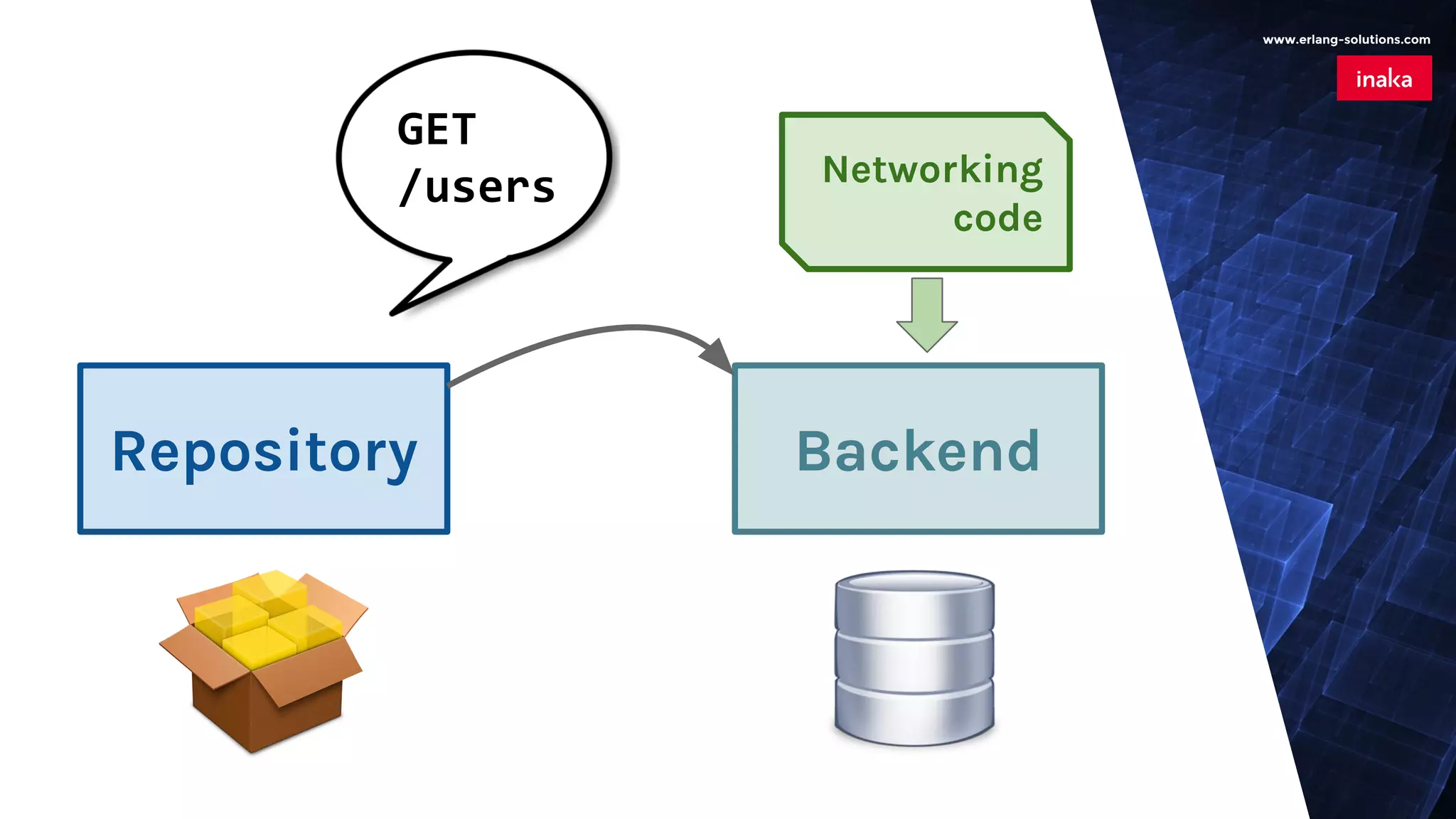
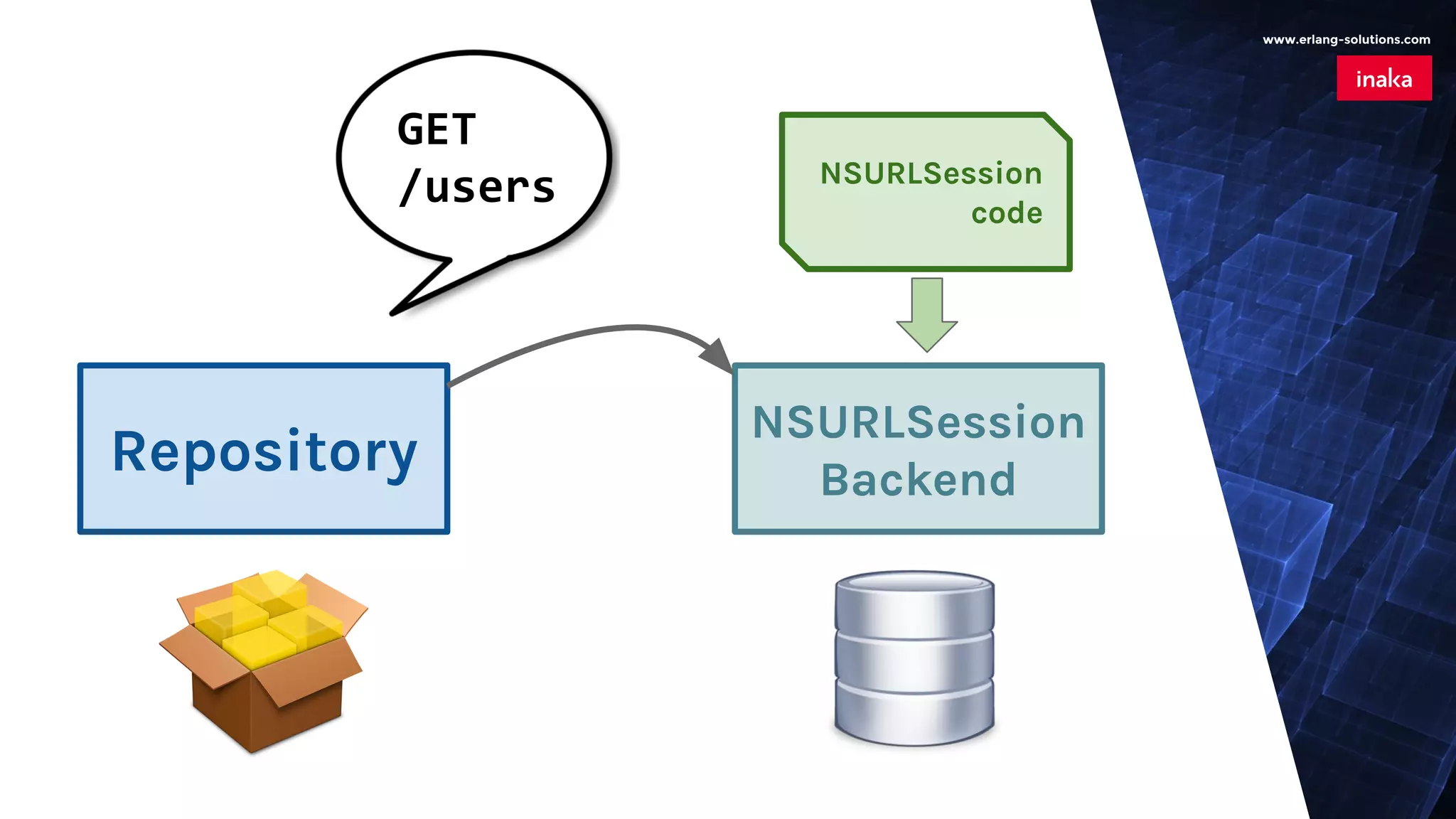

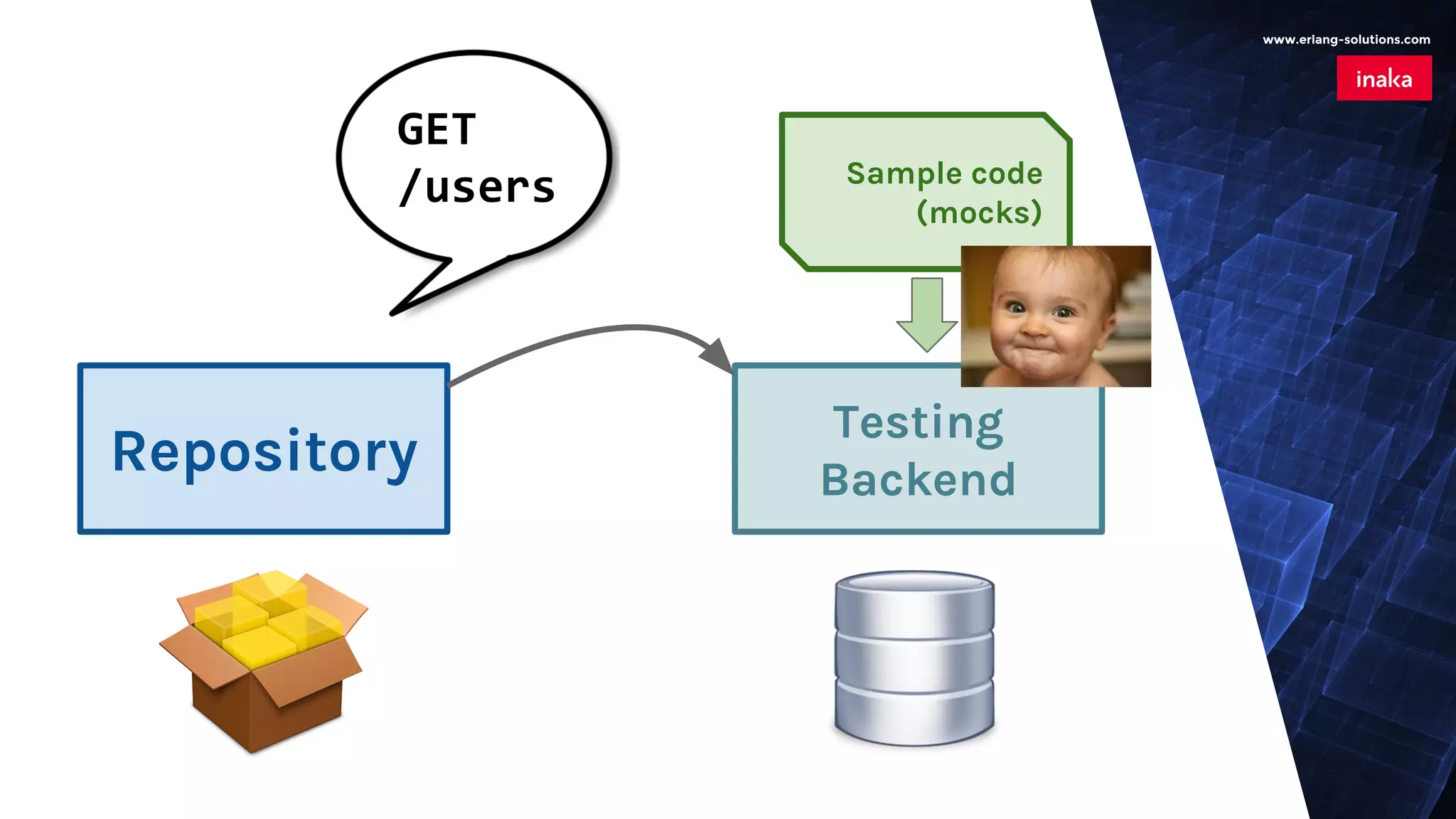
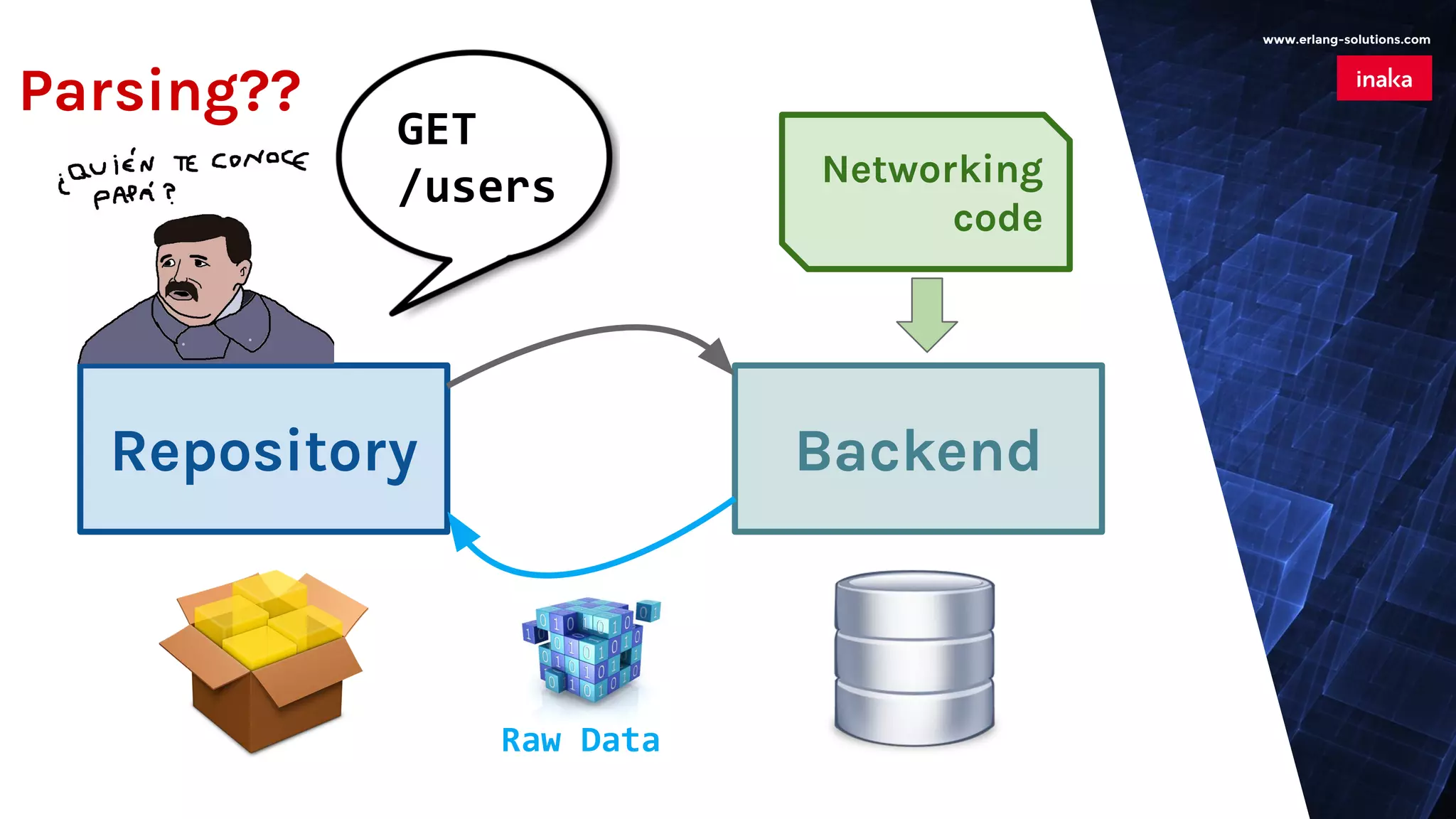
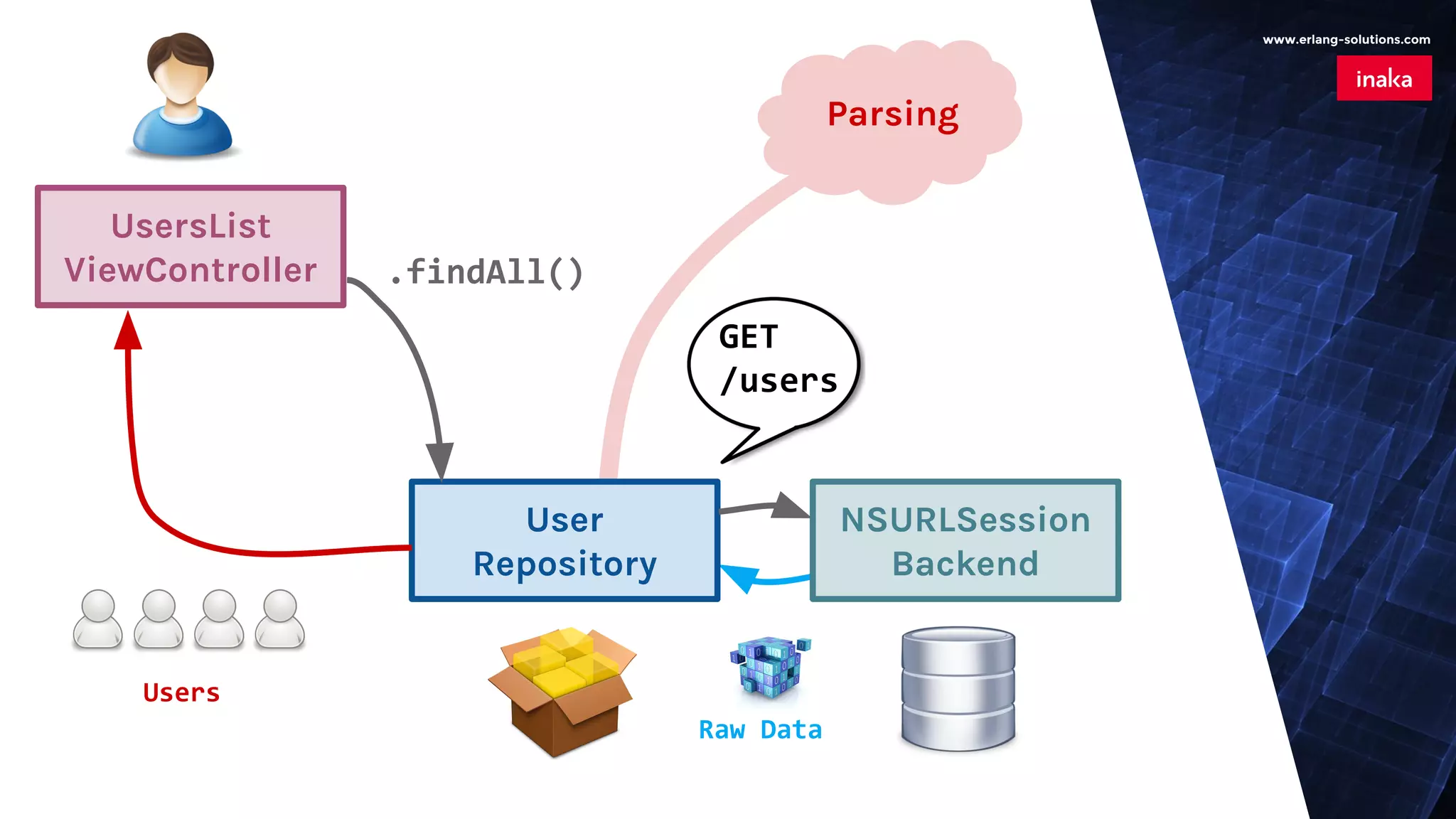
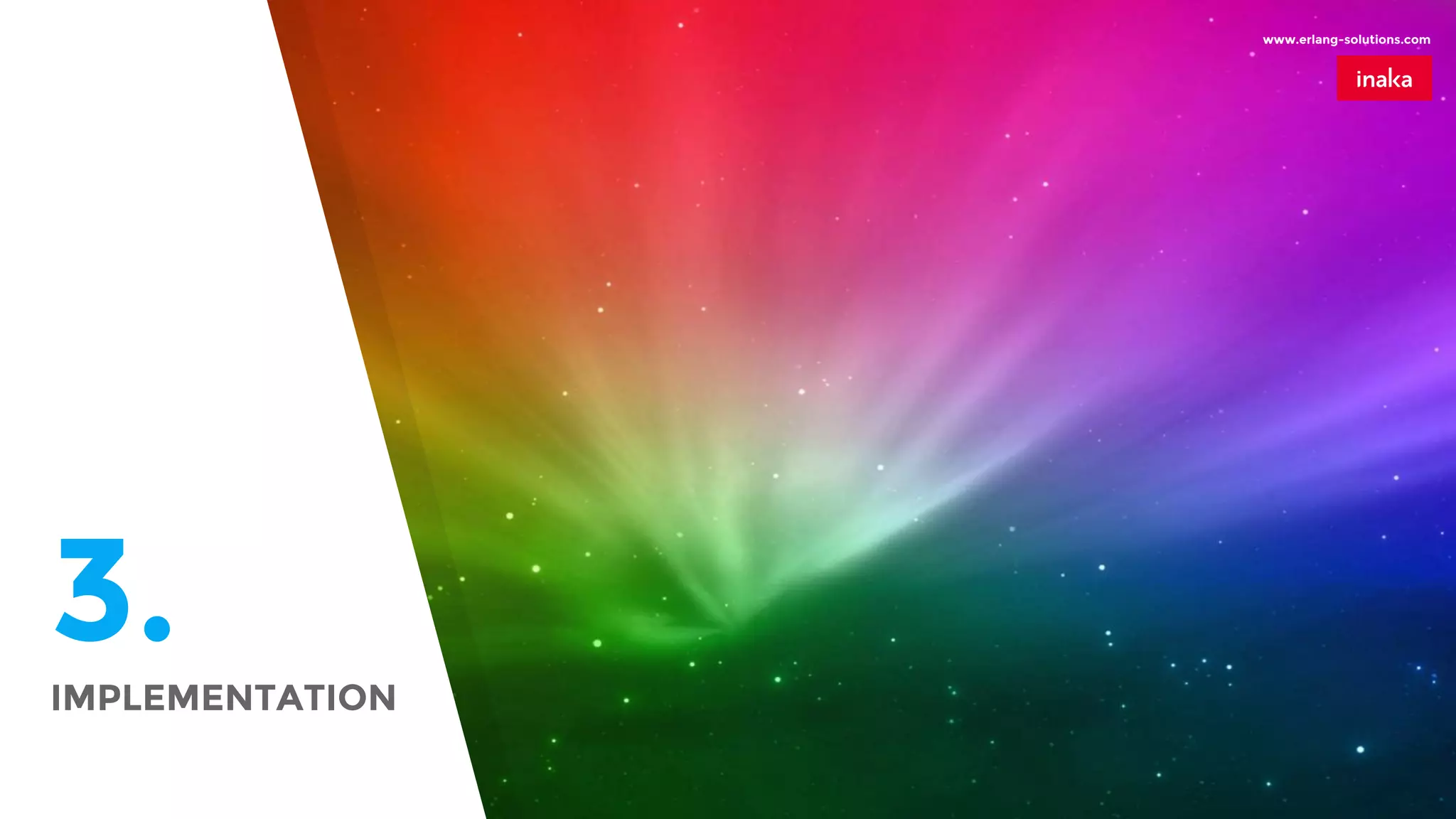




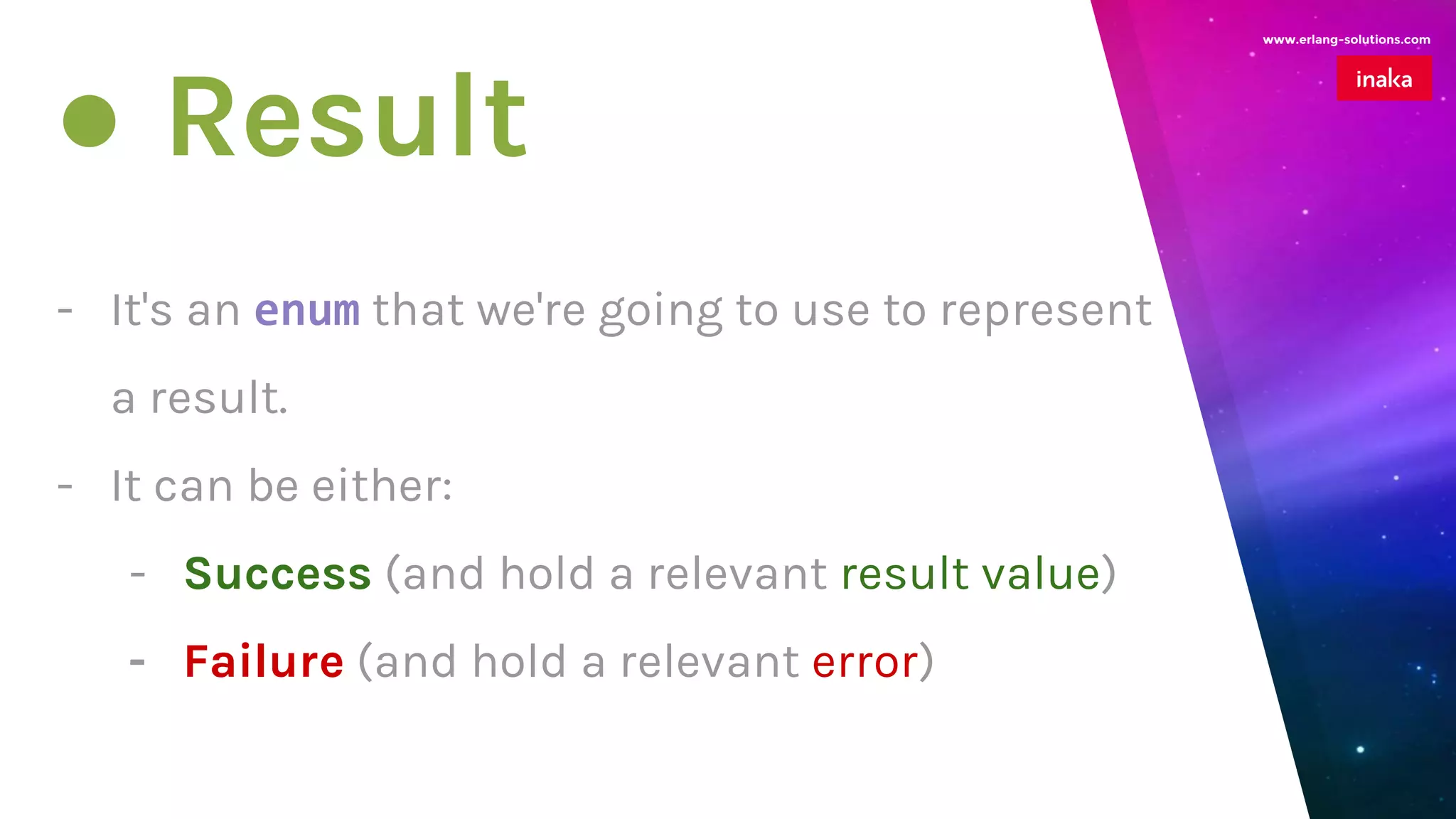
![www.erlang-solutions.com ● Result e. g. [User] e. g. NSError](https://image.slidesharecdn.com/warilis-160609134510/75/Writing-a-REST-Interconnection-Library-in-Swift-46-2048.jpg)
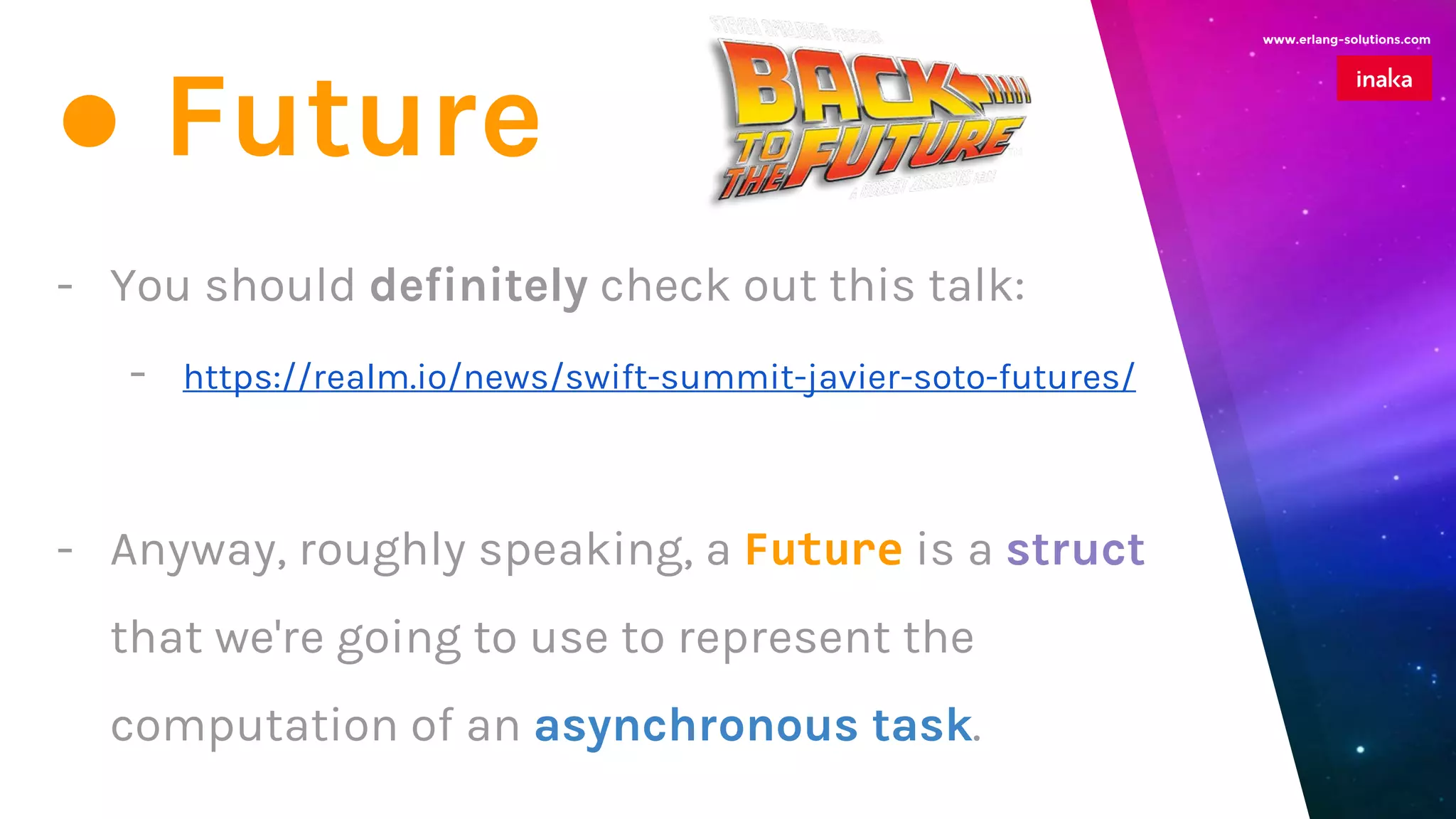

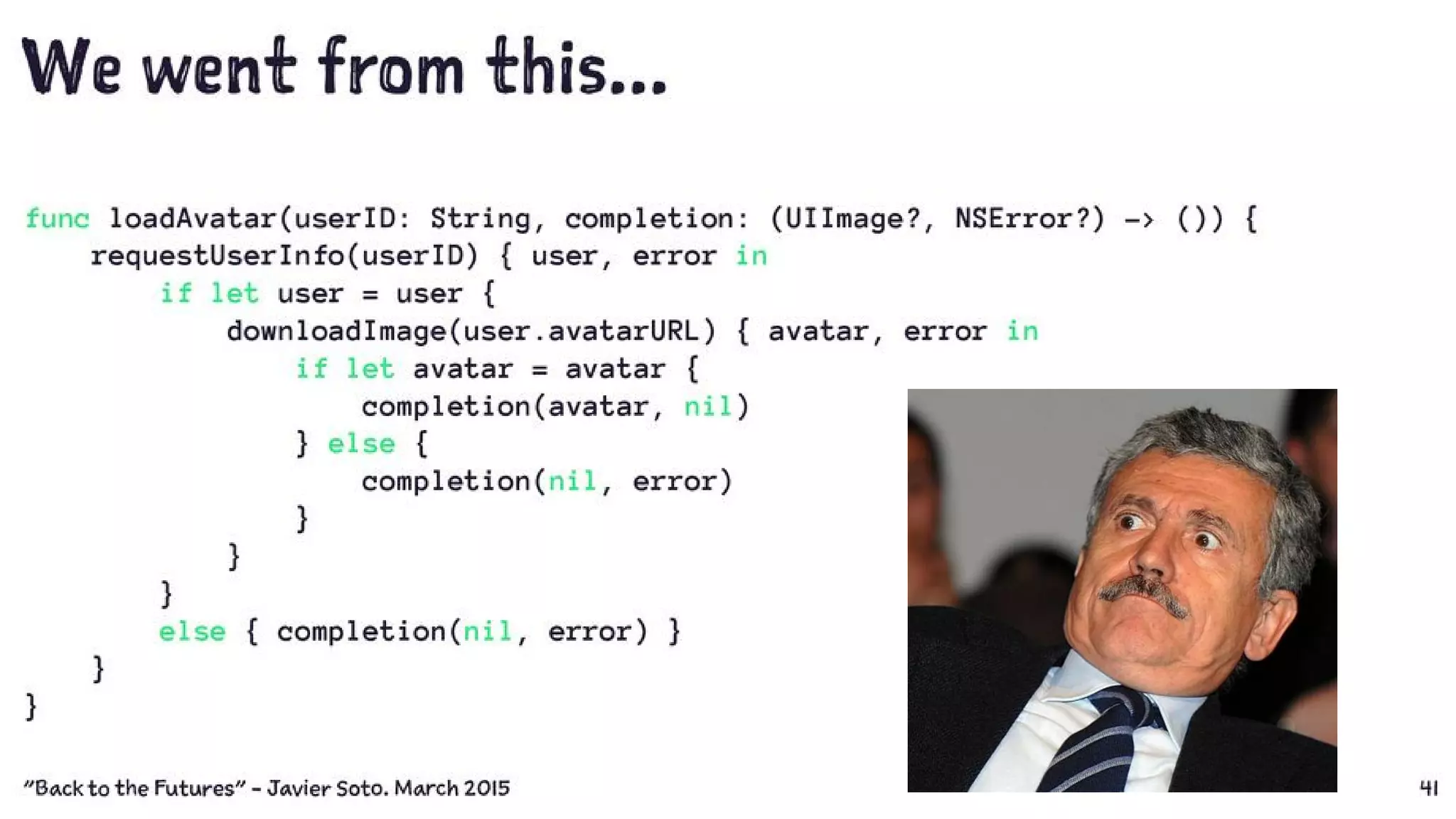

![www.erlang-solutions.com ● Future - Let's create a function that returns a Future: This Future is going to work with a Result<[User], NSError>](https://image.slidesharecdn.com/warilis-160609134510/75/Writing-a-REST-Interconnection-Library-in-Swift-51-2048.jpg)
![www.erlang-solutions.com - Let's use that Future: let result: (Result<[User], NSError>) Type inference let users: [User] let error: NSError](https://image.slidesharecdn.com/warilis-160609134510/75/Writing-a-REST-Interconnection-Library-in-Swift-52-2048.jpg)

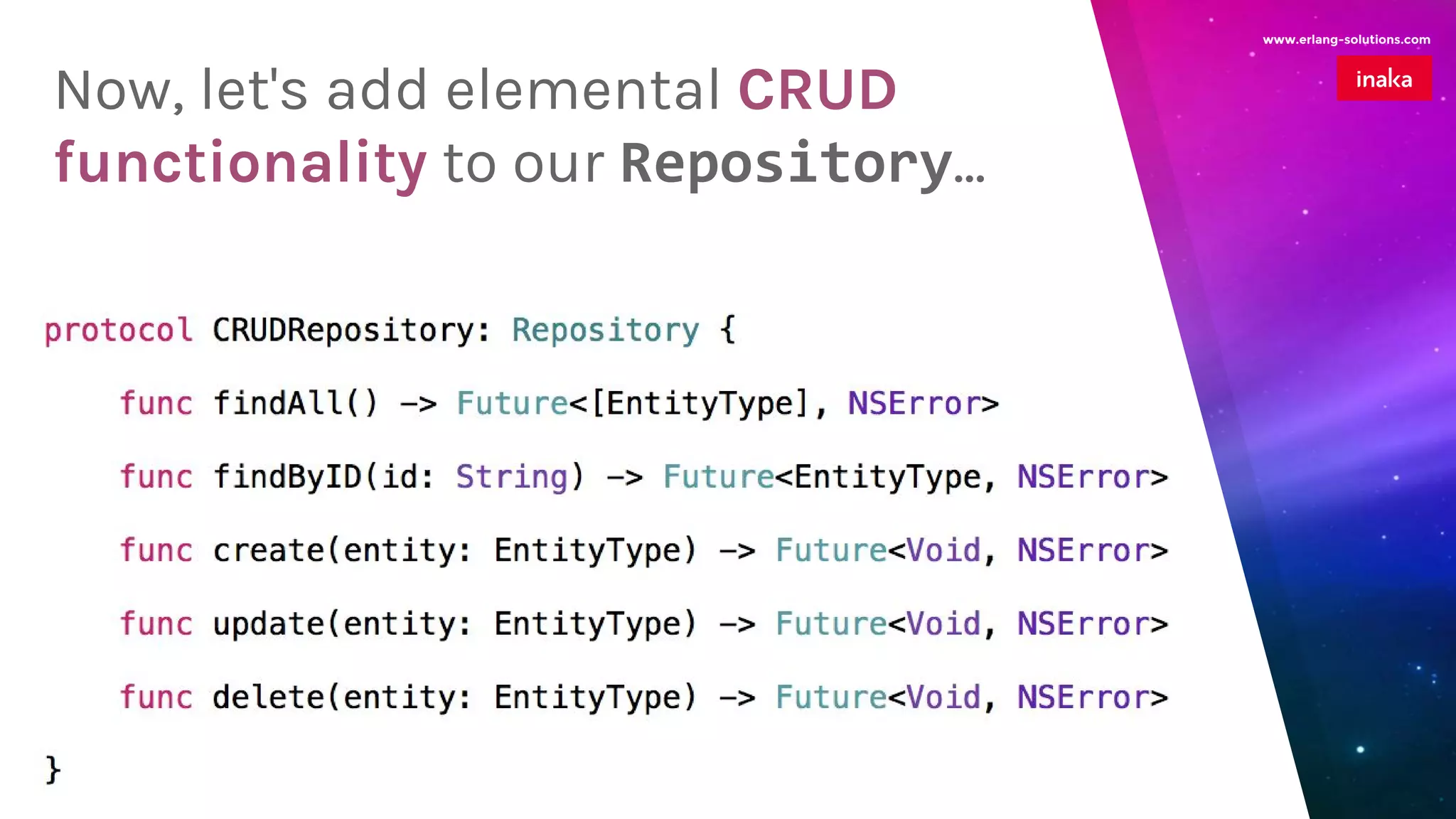

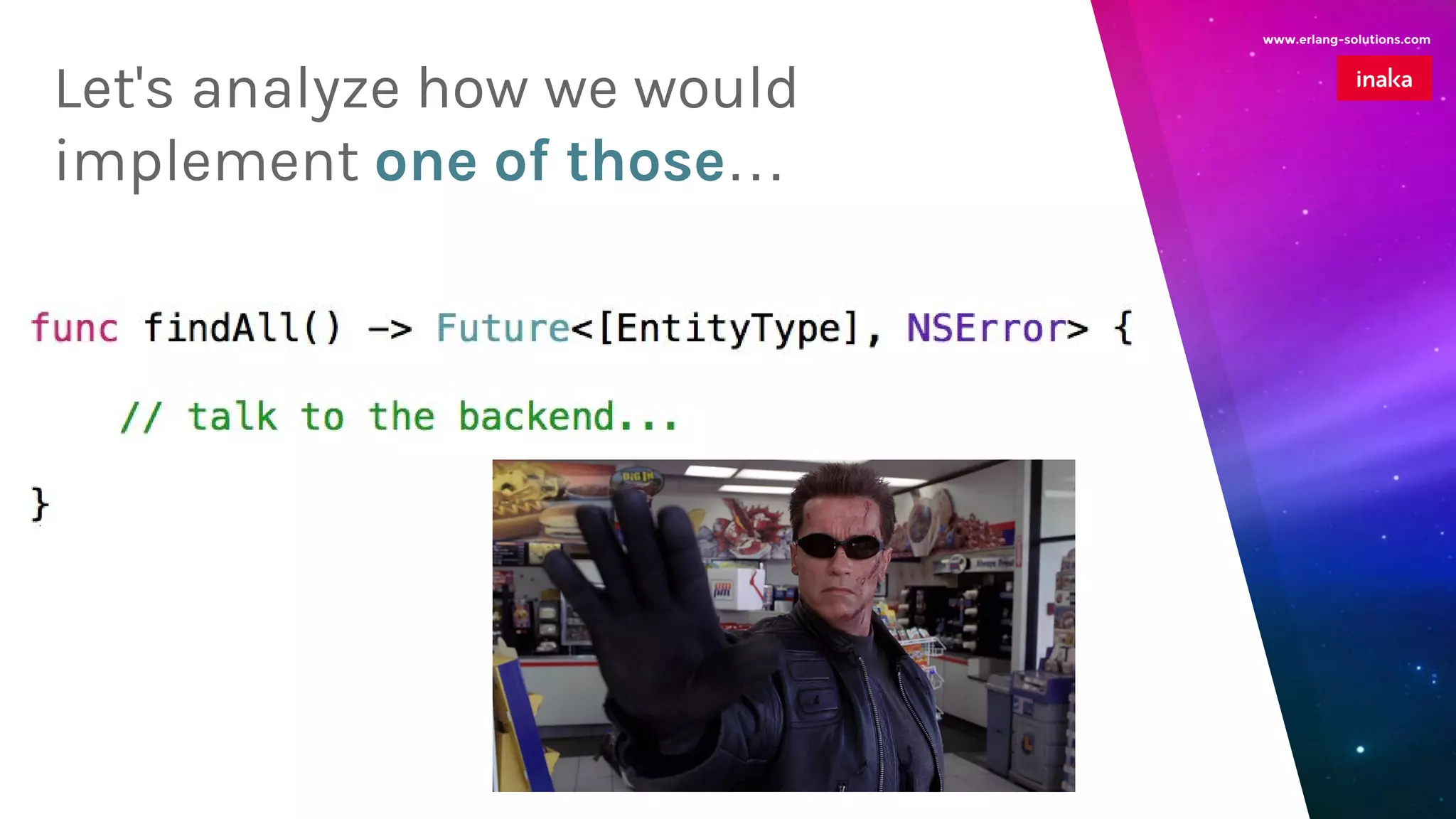
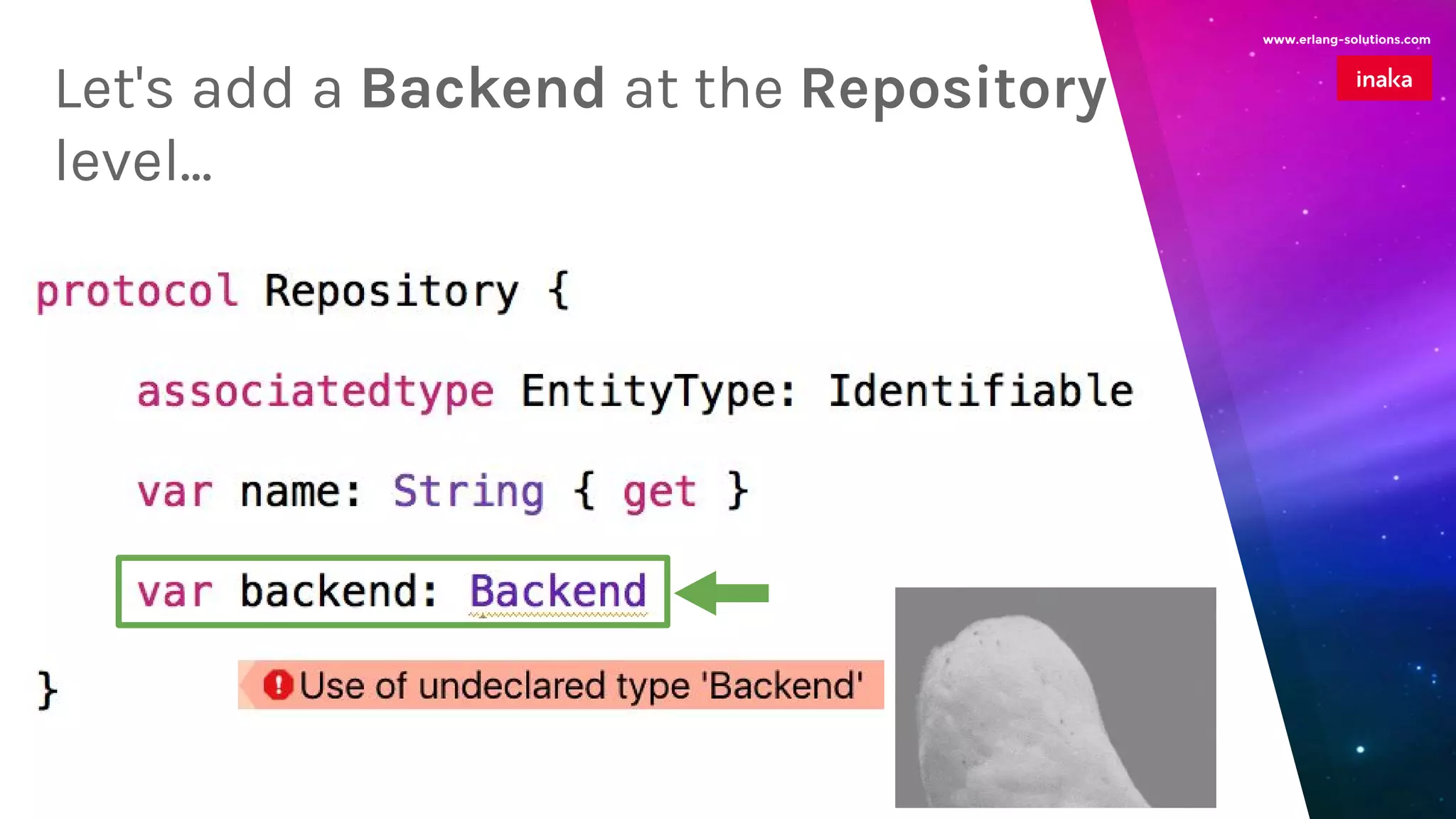
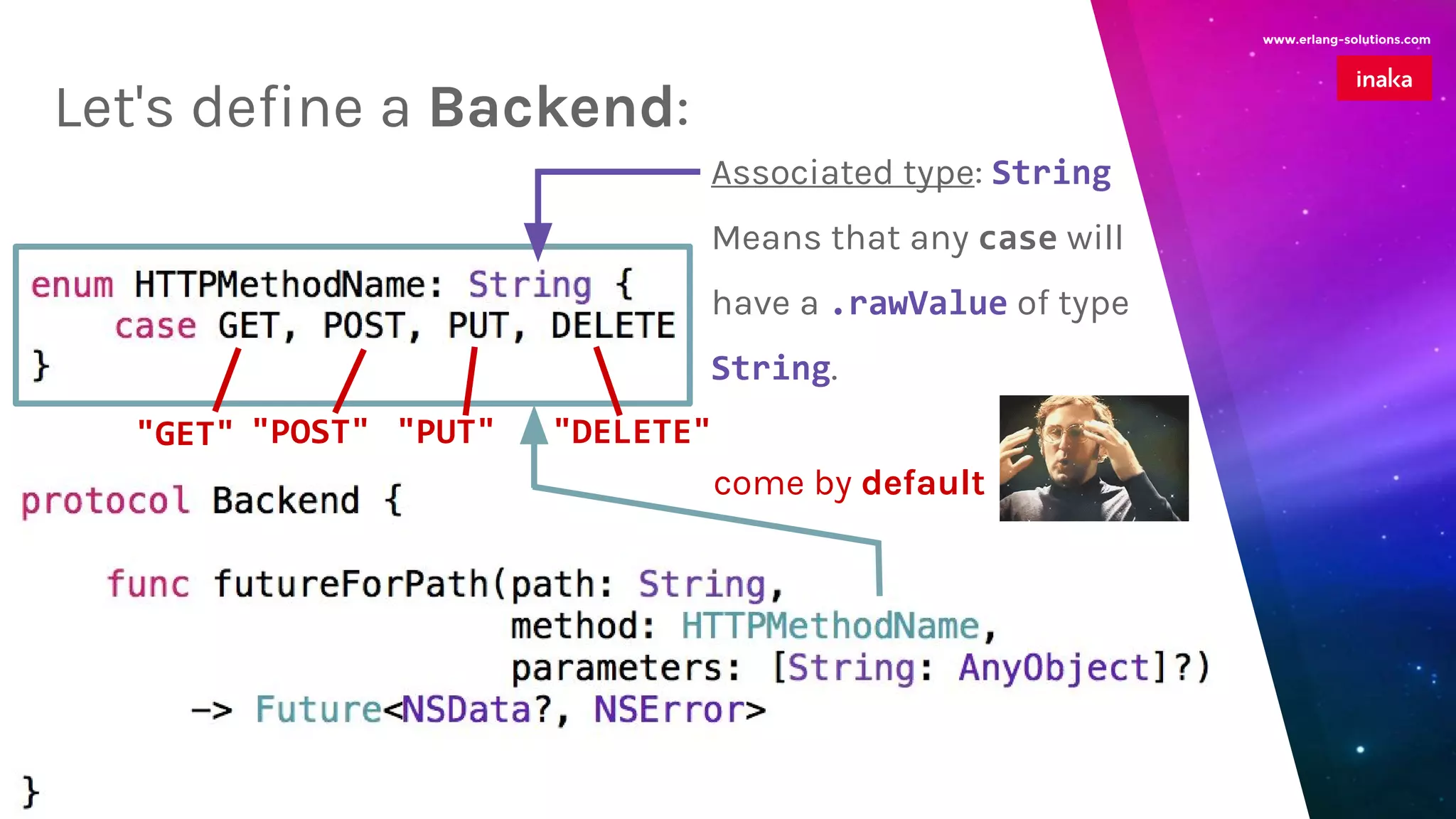
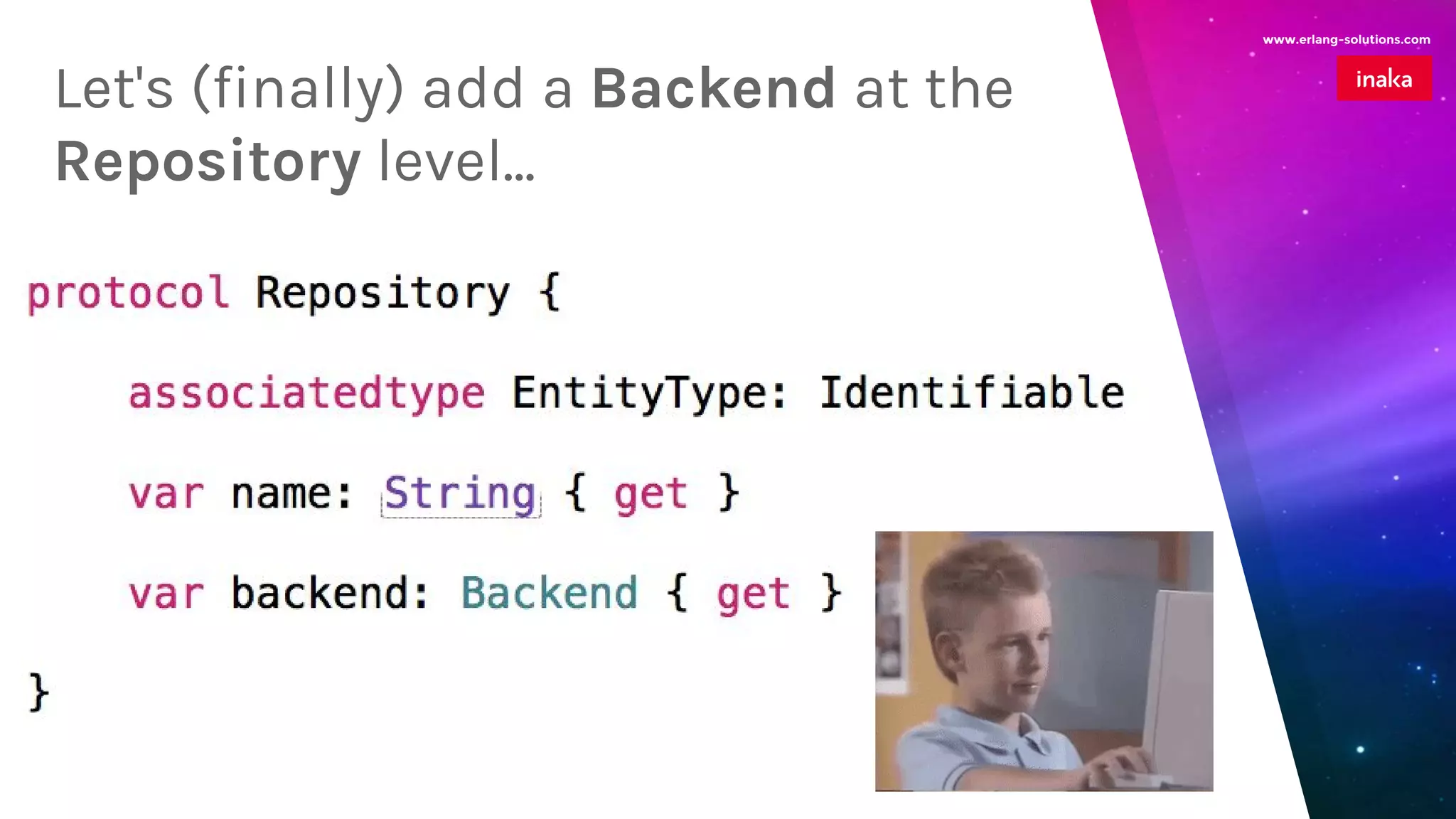
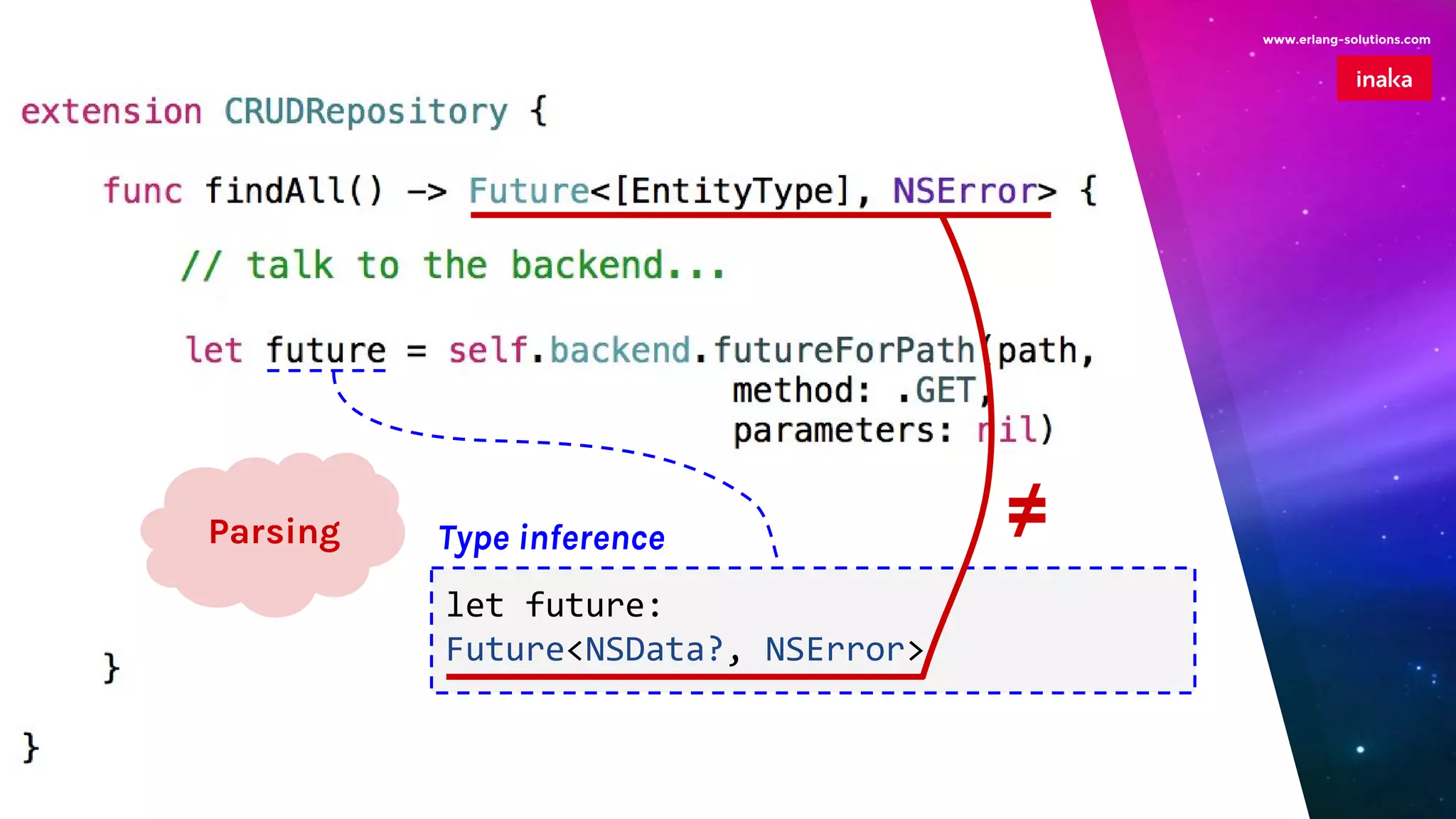
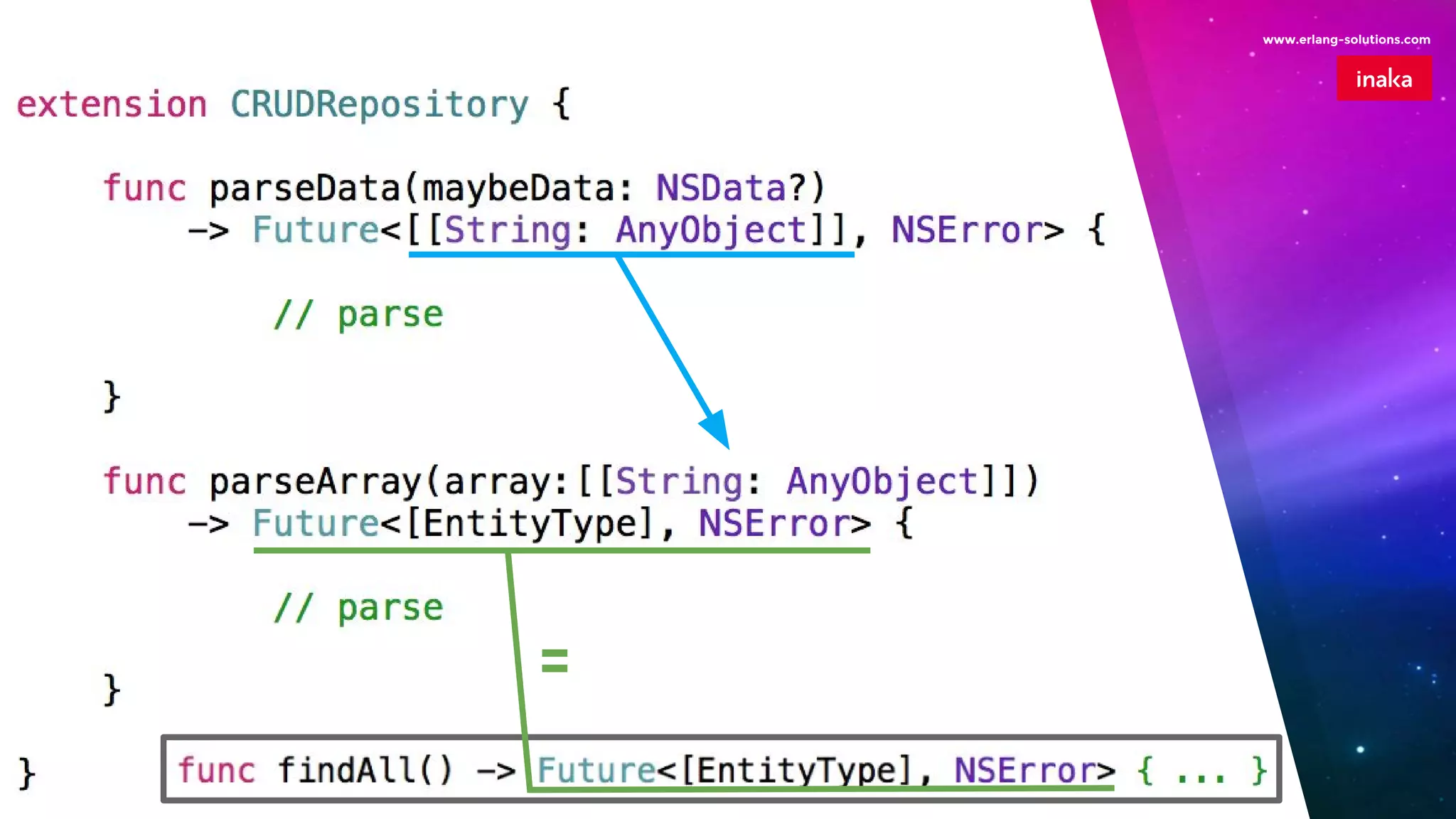
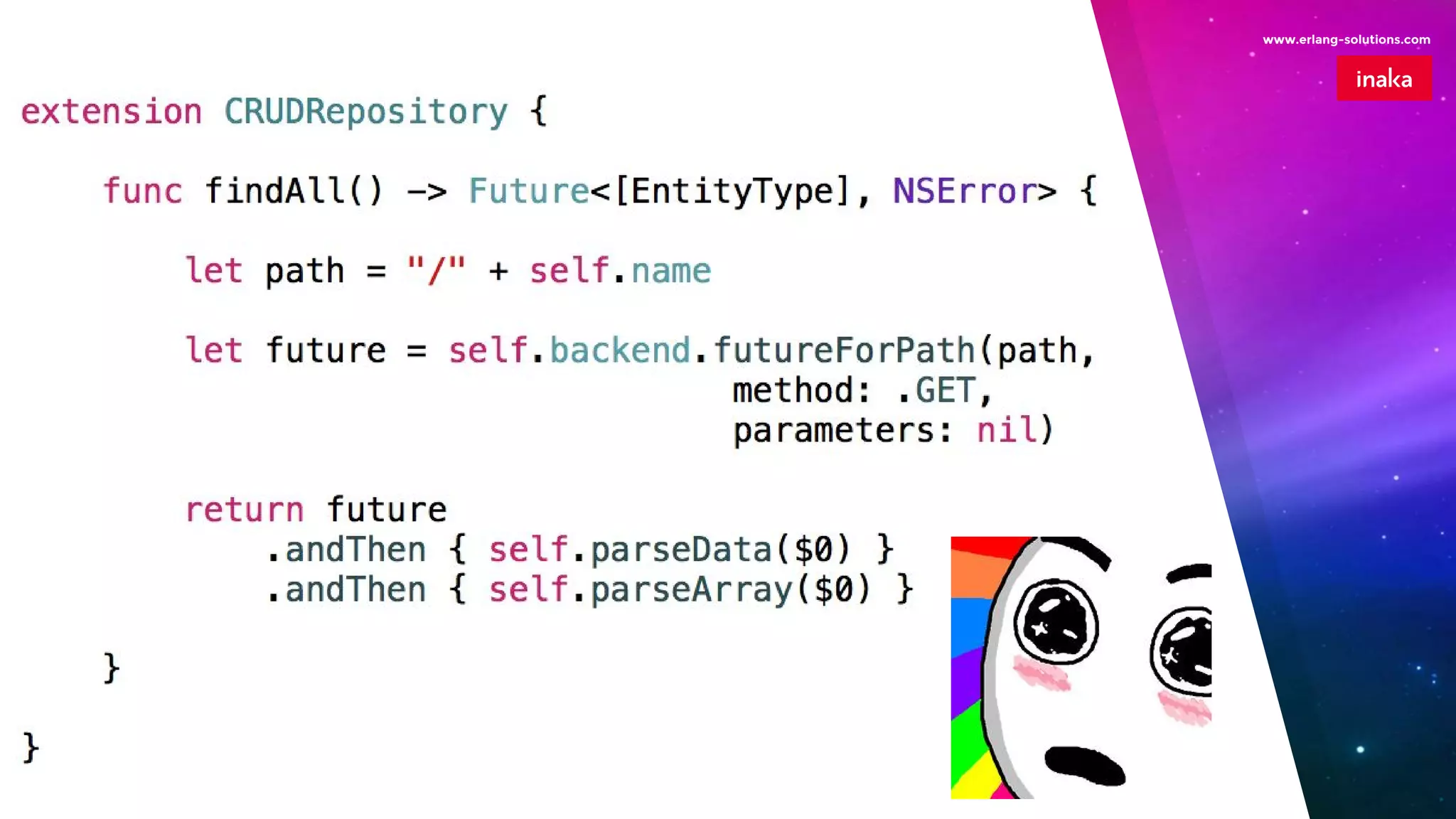
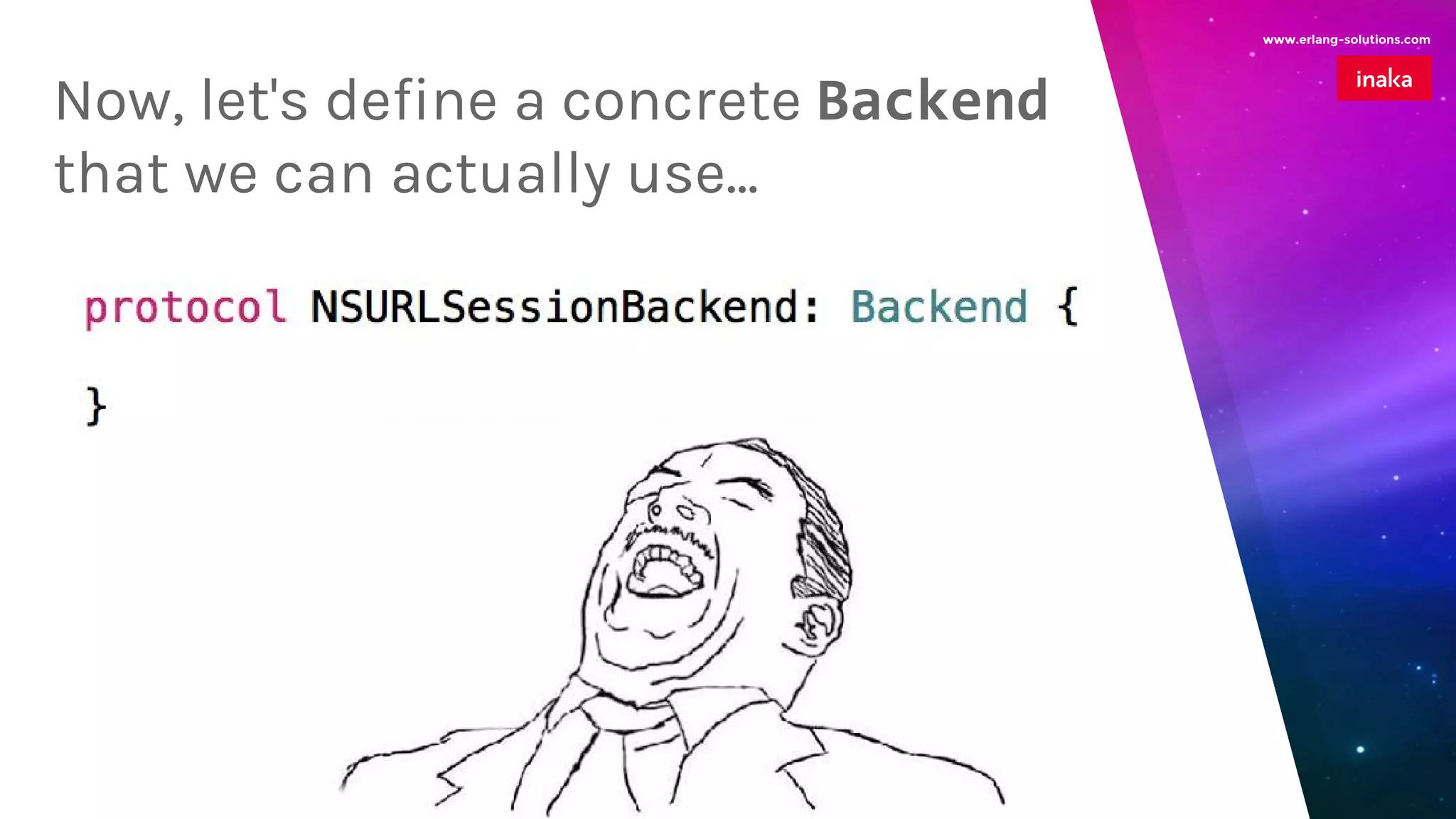

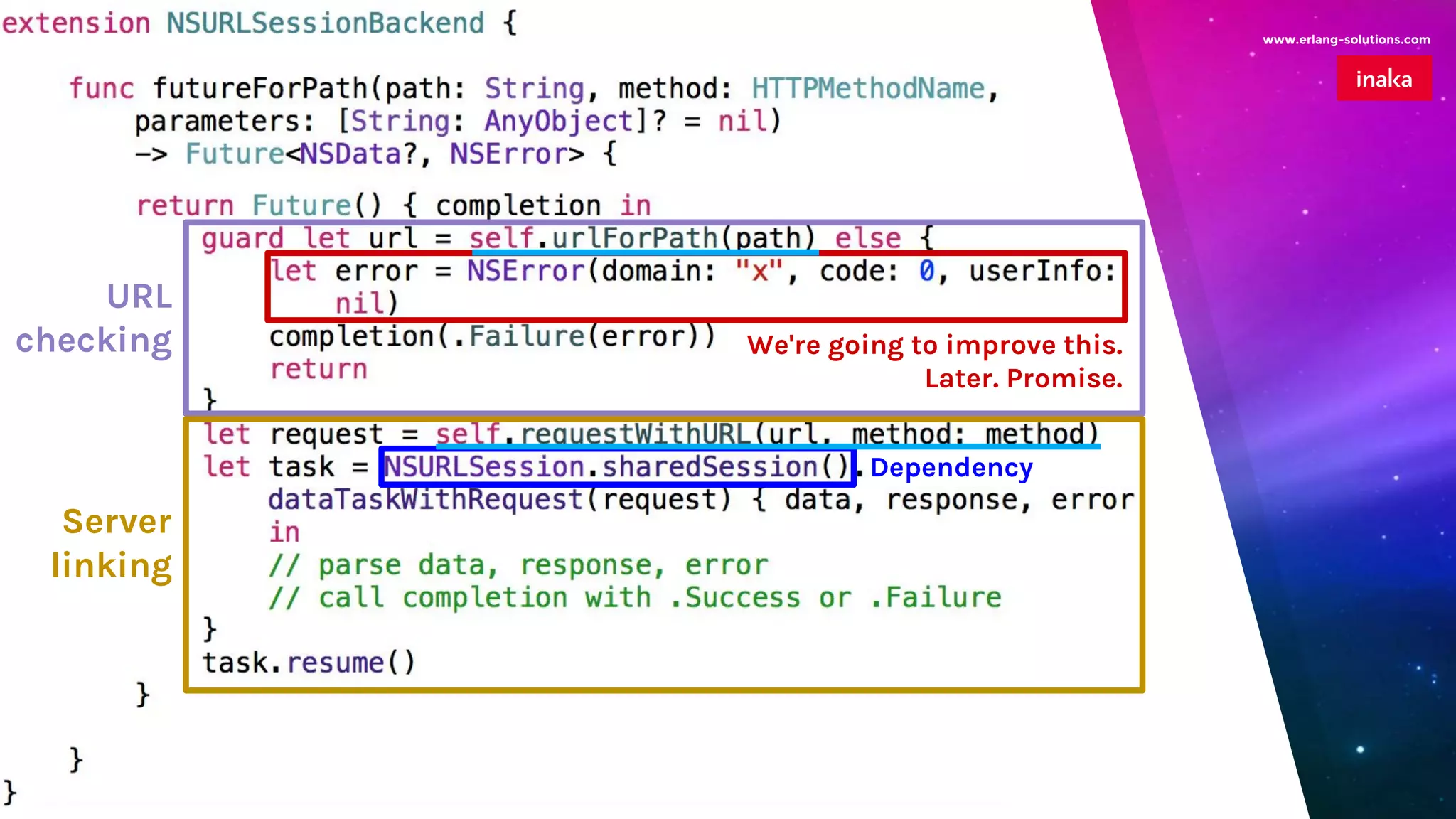
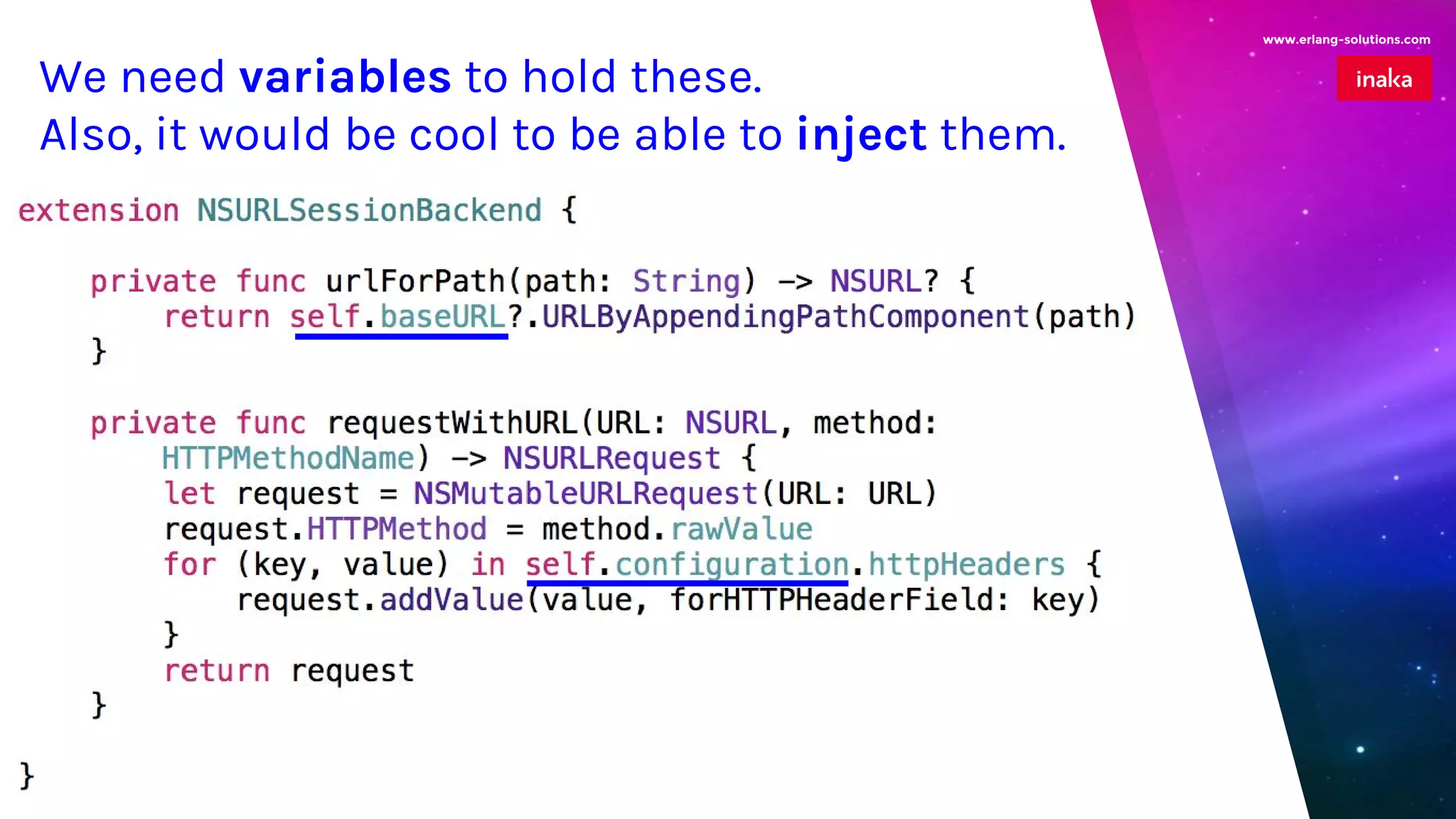
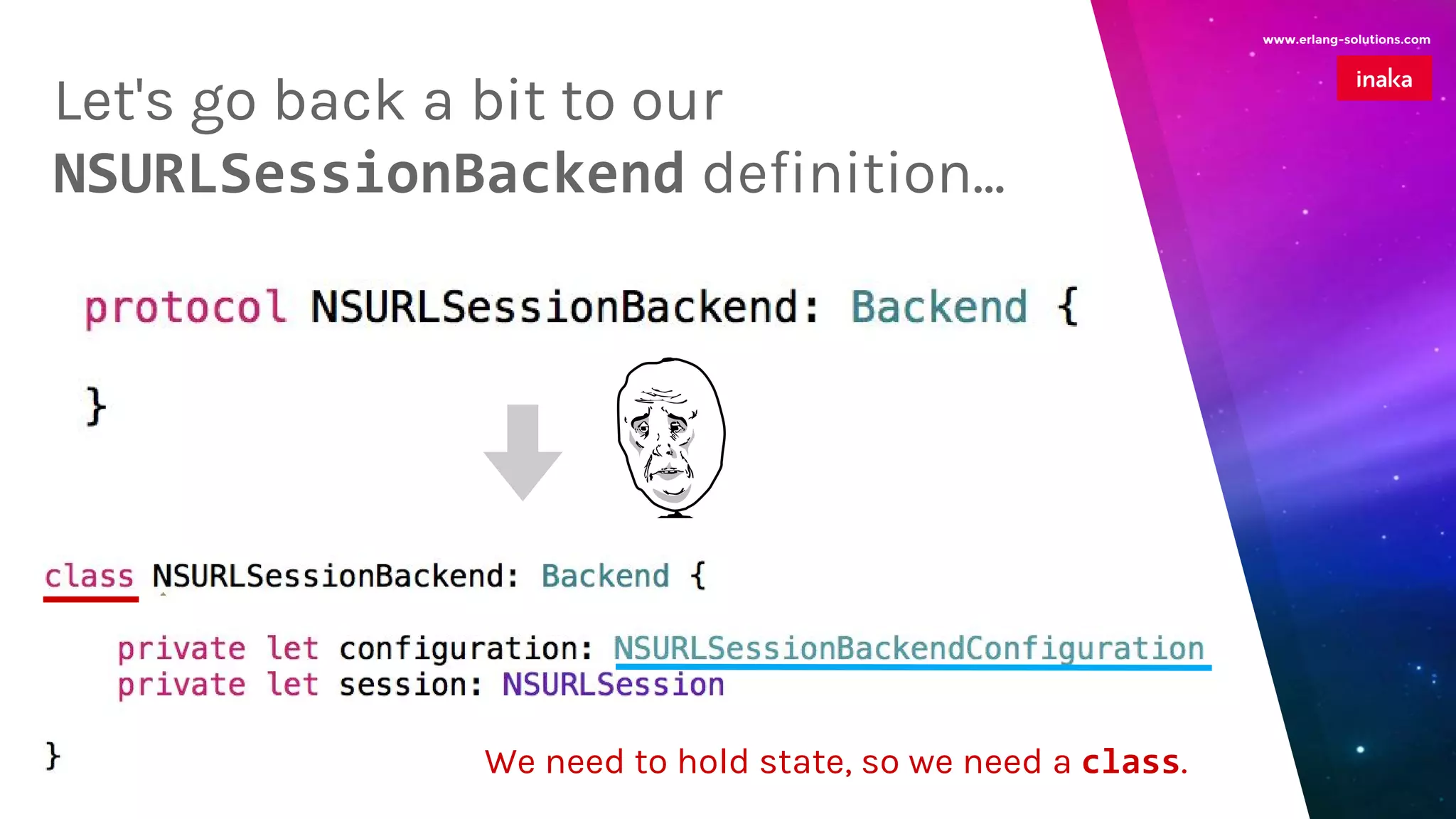
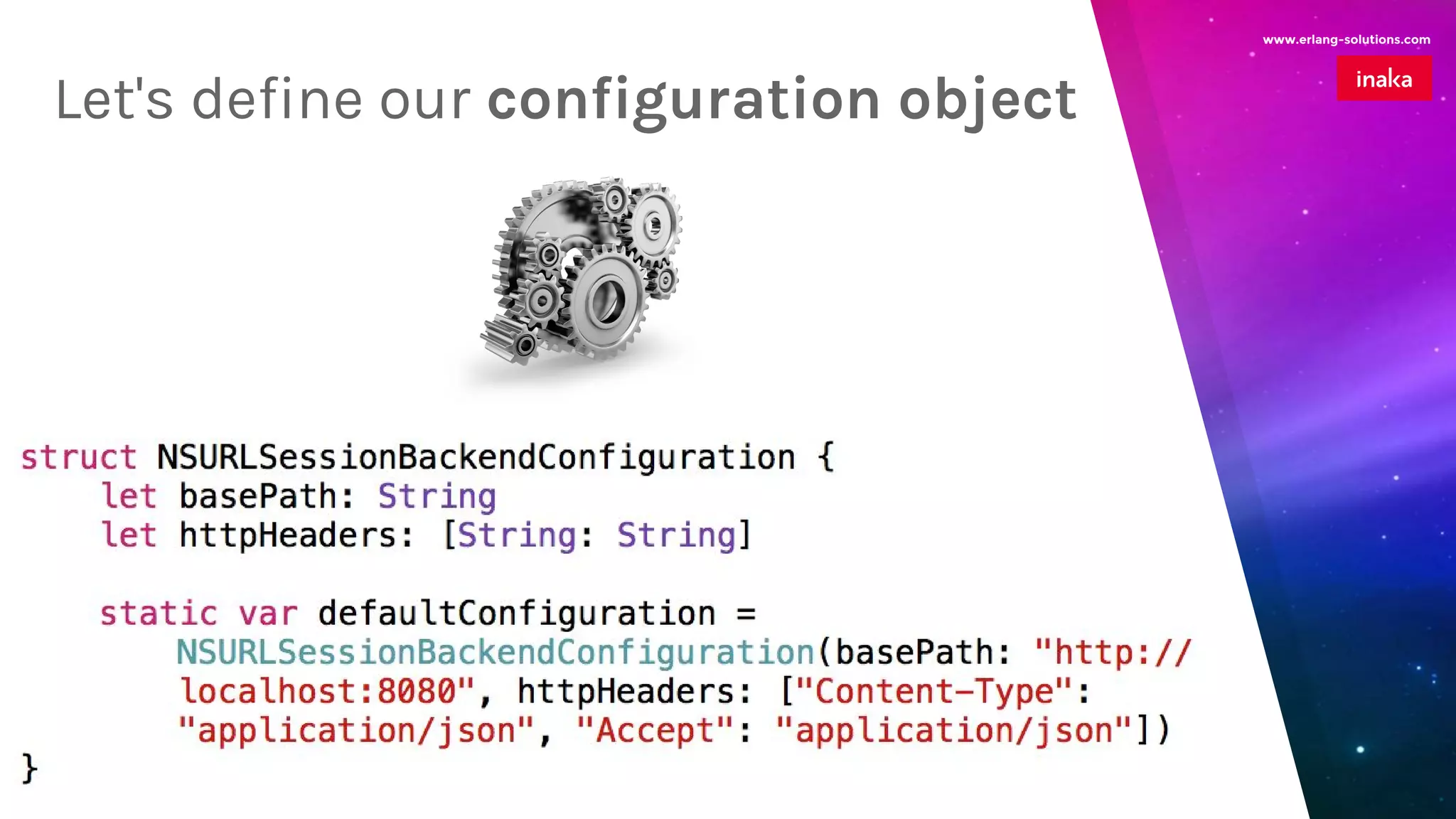


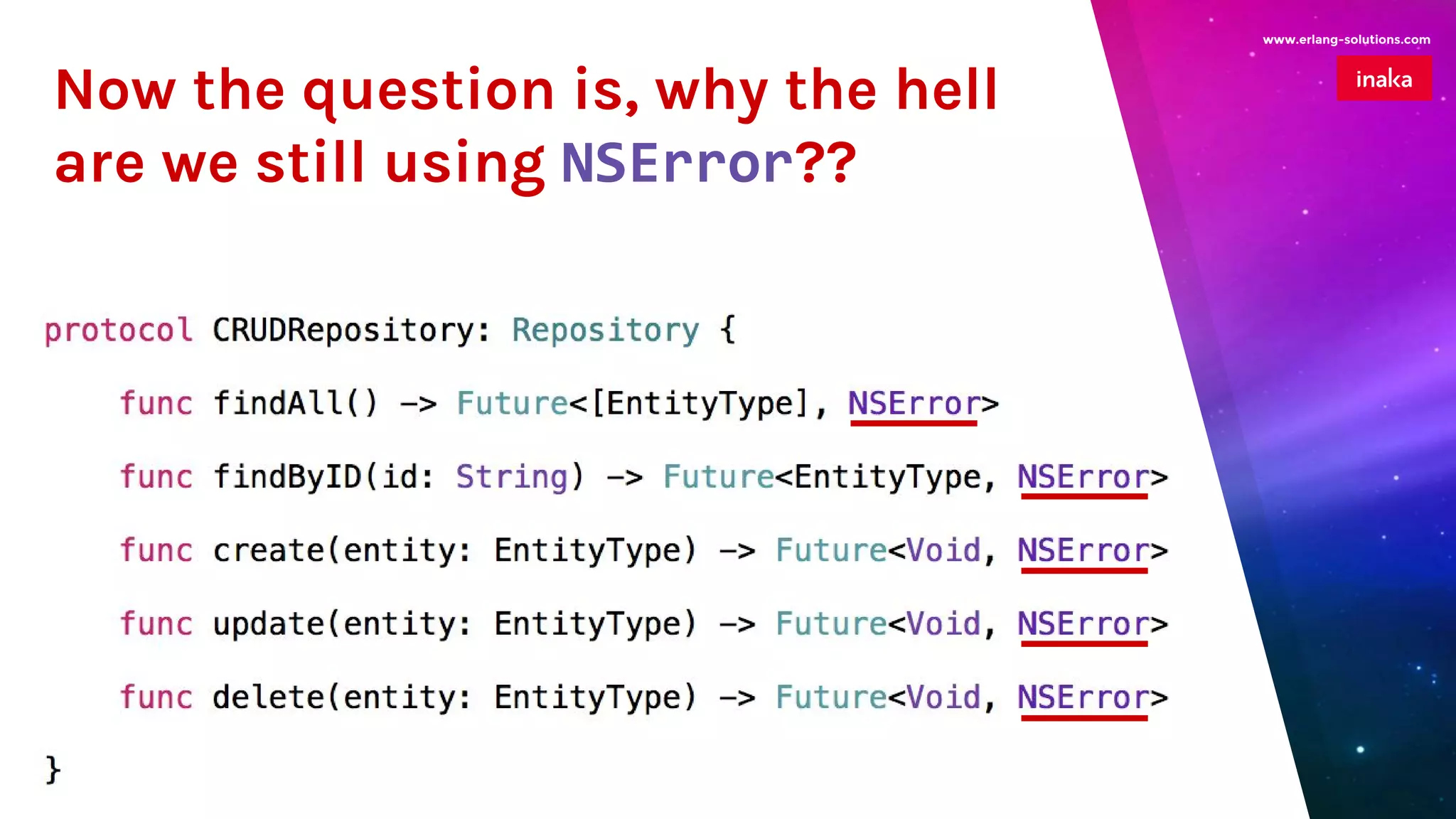
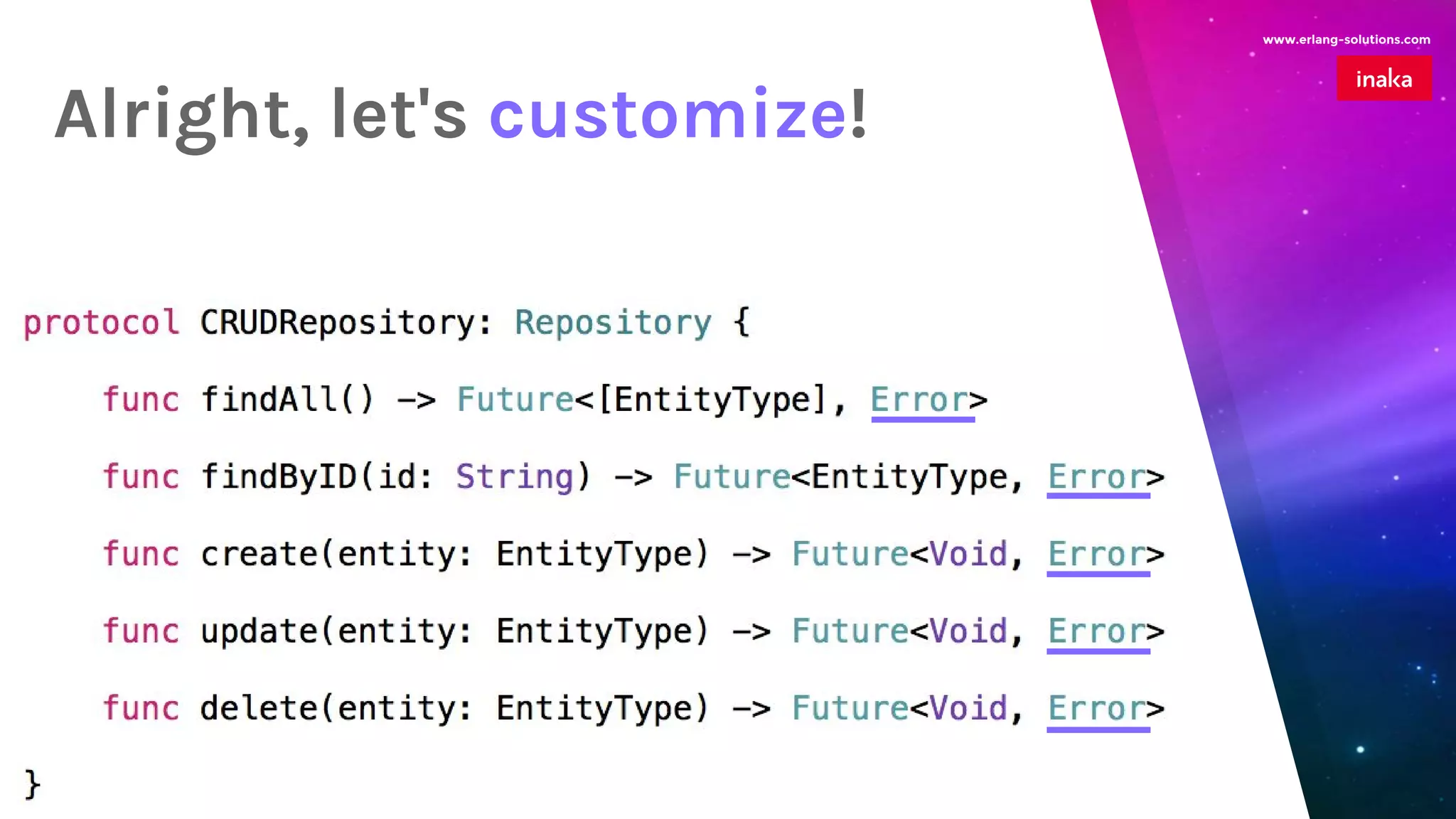


![www.erlang-solutions.com OK, let's talk about parsing... User[String: AnyObject] a.k.a. "Dictionary" conversion](https://image.slidesharecdn.com/warilis-160609134510/75/Writing-a-REST-Interconnection-Library-in-Swift-75-2048.jpg)
![www.erlang-solutions.com To the server OK, let's talk about parsing... User[String: AnyObject] create() update() Dictionary Representable](https://image.slidesharecdn.com/warilis-160609134510/75/Writing-a-REST-Interconnection-Library-in-Swift-76-2048.jpg)
![www.erlang-solutions.com OK, let's talk about parsing... User[String: AnyObject] read() From the server Dictionary Initializable](https://image.slidesharecdn.com/warilis-160609134510/75/Writing-a-REST-Interconnection-Library-in-Swift-77-2048.jpg)
